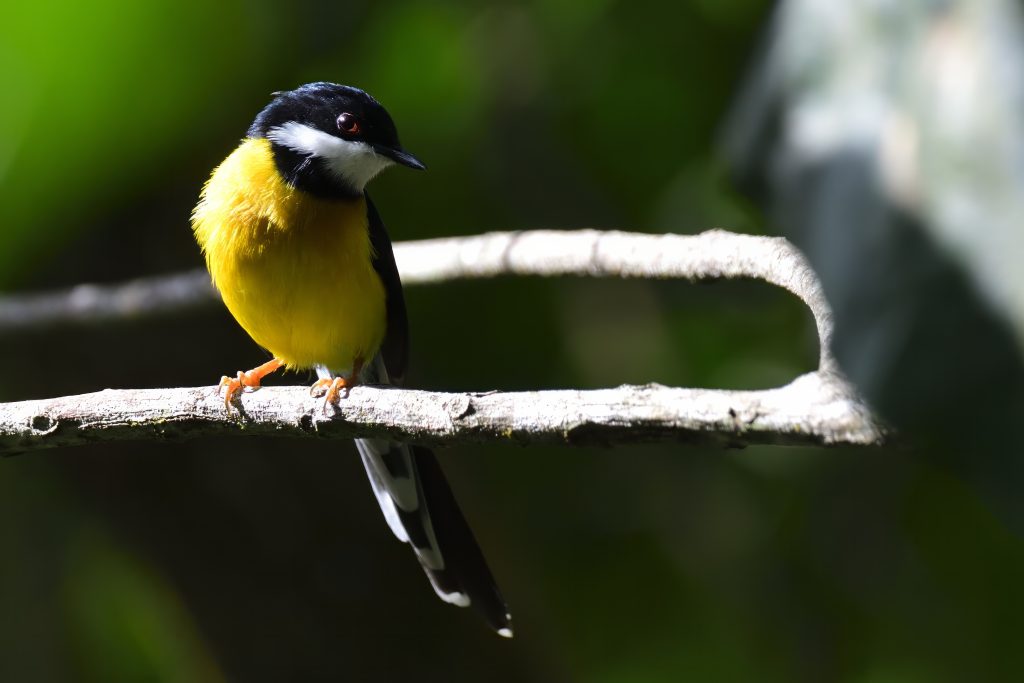
On July 15, this year my South African friends Niall Perrins and Justin Rhys Nicolau arrived with Nialls English friend Richard Carden. I picked them up from the airport in the afternoon and Justin managed to get his first lifer in the form of a Superb Starling at the airport. I took them to my house and Neema and Selvine had a nice dinner prepared for us.
Day 1, Sunday, July 16: My home – Arusha National Park – My home.
This was supposed to be the only day trip out from my house. We were at the gate around 7:00. (Target species in bold). The boys started birding at the gate while I went to pay the entrance fee. They managed to pick up a few birds at the gate. Here are some of them: Northern Fiscal, White-necked Raven, Red-faced Crombec, Bronzy Sunbird, Speckled Mousebird and Cape Robin-Chat. We started driving slowly towards the museum and picked up amongst others, the following species: Brown-crowned Tchagra, Baglafecht Weaver, Singing Cisticola, Hamerkop, Grey-backed Cameroptera, Trilling Cisticola, Brown-breasted Barbet, Chinspot Batis, Tropical Boubou, Rüppel´s Robin-Chat, Black Sparrowhawk, Palm-nut Vulture, African Dusky Flycatcher, Red-faced Cisticola, Pale White-eye, Black-headed Oriole and Hartlaub´s Turaco. We stopped by the museum and added amongst others: White-eared Barbet, White-eyed Slaty Flycatcher, Black-throated Wattle-eye, African Goshawk, Sharpe´s Starling, Collared Sunbird and Waller´s Starling. We continued up to the Ngurdutu Crater and took the left fork, then we drove down and took the right fork to our breakfast spot. Here are some of the species we picked up: Crowned Eagle, Silvery-cheeked Hornbill, Scaly Spurfowl, Eastern Bronze-naped Pigeon, Red-backed Mannikin, African Emerald Cuckoo, Green Malkoha, Grey-crowned Crane, Brown-hooded Kingfisher, Black-headed Apalis, Ashy Flycatcher, Long-crested Eagle and Olive Sunbird. Some of those species we picked up while having breakfast. We headed down towards the museum again and added Stripe-cheeked Greenbul, Broad-ringed White-eye, Cinnamon-chested Bee-eater, Kenrick´s Starling, Black-backed Puffback and Red-headed Weaver. Some of these we picked up at our brief stop at the museum. We drove on towards the lakes and on the way managed to register Narina Trogon, Thick-billed Weaver, Tambourine Dove, Helmeted Guineafowl, Banded Martin, Winding Cisticola, Moustached Grass Warbler, White-browed Coucal, Variable Sunbird and Little Bee-eater. We had not seen Pangani Longclaw yet so we continued towards the new picnic spot in the park. Here are some of the species we recorded: Maccoa Duck, Southern Pochard, Little Grebe, Brown-throated Martin, Rufous-naped Lark, Pangani Longclaw, Red-billed Teal, Cape Teal, African Sacred Ibis, Little Egret, Greater Painted Snipe, Black-winged Stilt, Blacksmith Lapwing, Three-banded Plover, Diederik Cuckoo, African Pied Wagtail, Scarlet-chested Sunbird and spotted Thick-knee. We turned and drove towards Mount Meru and managed to pick up Crimson-rumped Waxbill on the way. We drove up to the Fig tree and registered Mountain Wagtail, African Black Duck and Black Saw-wing on the way up. It was quiet at the Fig Tree, but we still managed to pick up a few species: Evergreen Forest Warbler and Brown Woodland Warbler. We continued up to our lunch spot by the waterfall and registered Ayre´s Hawk-Eagle, White-starred Robin and Mountain Buzzard. We had lunch and drove down to the Fig tree again. It were still quiet, but we had a pair of Bar-tailed Trogons and a Mountain Greenbul before we continued down the mountain. It was quiet on the way down, but in the grasslands just before the gate we made a few stops and registered Intermediate Egret, White-backed Vulture, Green Sandpiper!, Black-headed Heron and Black Cuckooshrike. We drove out of the gate and we still had some time and I stopped at my Taveta Weaver site. We were back at my house around 18:20 and there were still light for some birding in my garden and on the Golf Course next to my house. Here are some of the birds registered: Village Indigobird, Singing Cisticola, Violet-backed Starling, Long-tailed Paradise Whydah, Blue-naped Mousebird, Hildebrandt´s Starling, Red-cheeked Cordon-bleu, Spotted Palm Thrush, Purple Grenadier, Bat Hawk, Red-chested Cuckoo and Nubian Woodpecker. The ladies had prepared a nice meal for us. We went through the bird list after dinner and found out that we had registered 136 species in total that day. We retired to bed quite early.
Some Pictures from Day 1:
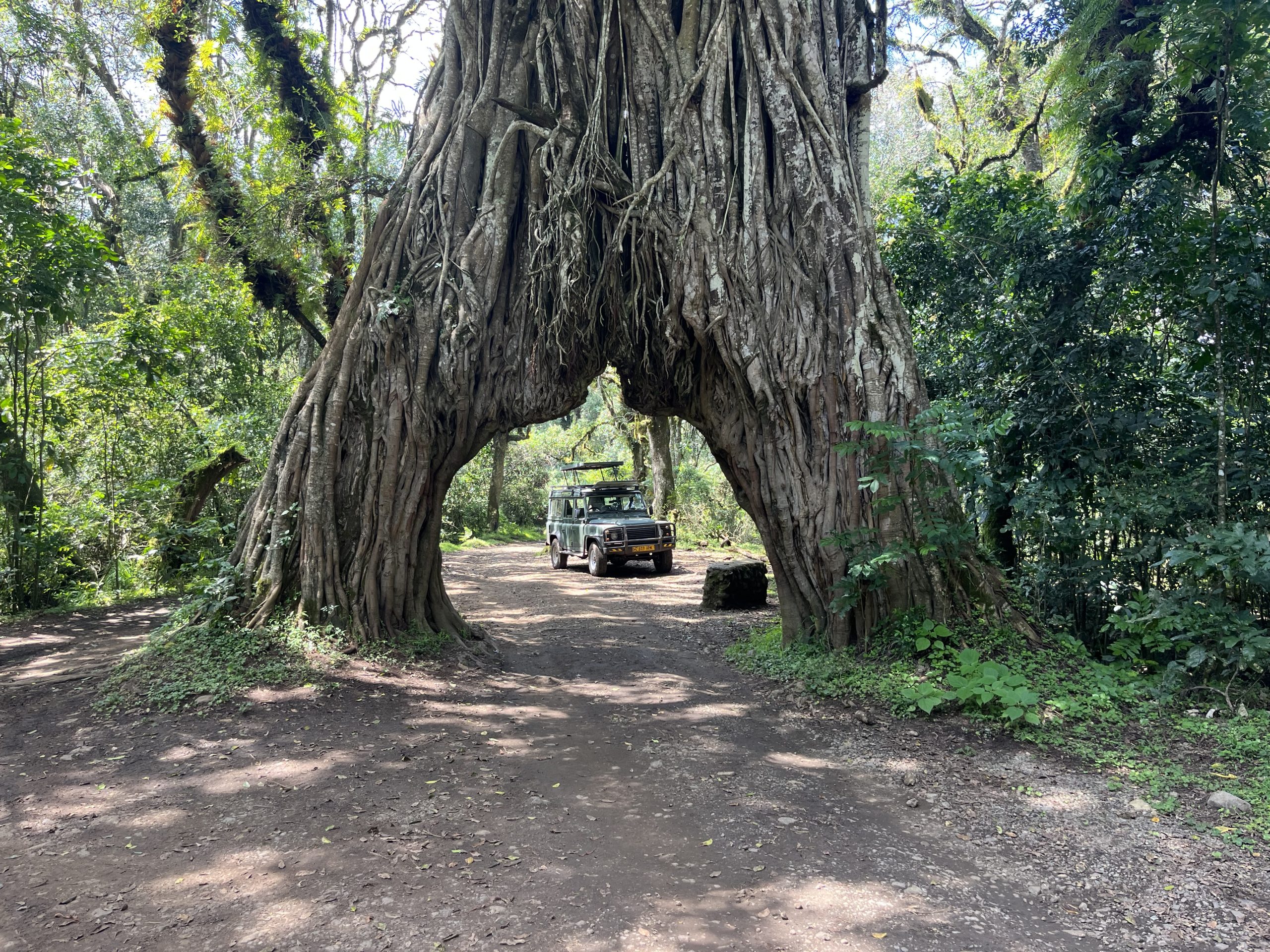
My Land Rover Maggie T and the Fig tree
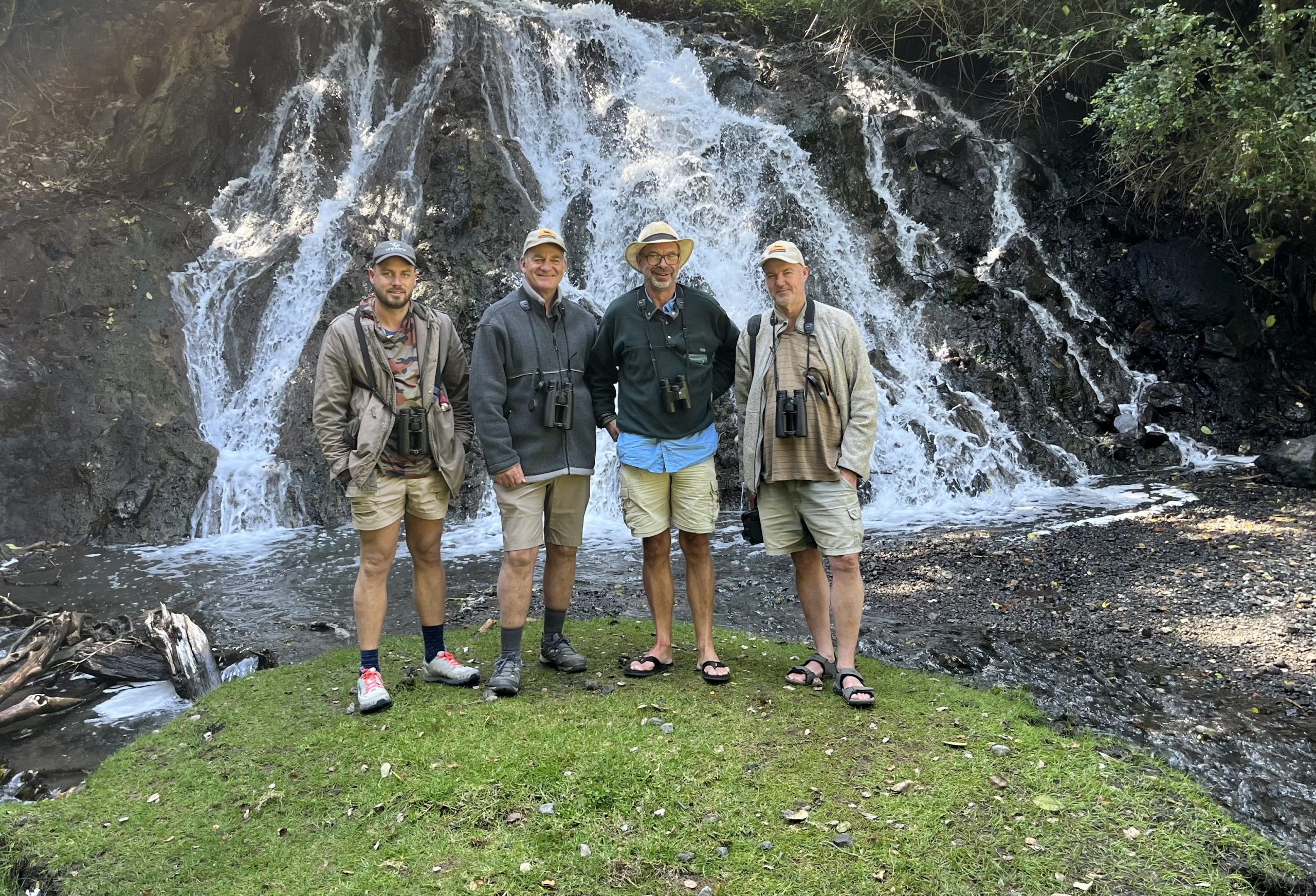
Justin, Richard, me and Niall at the water fall
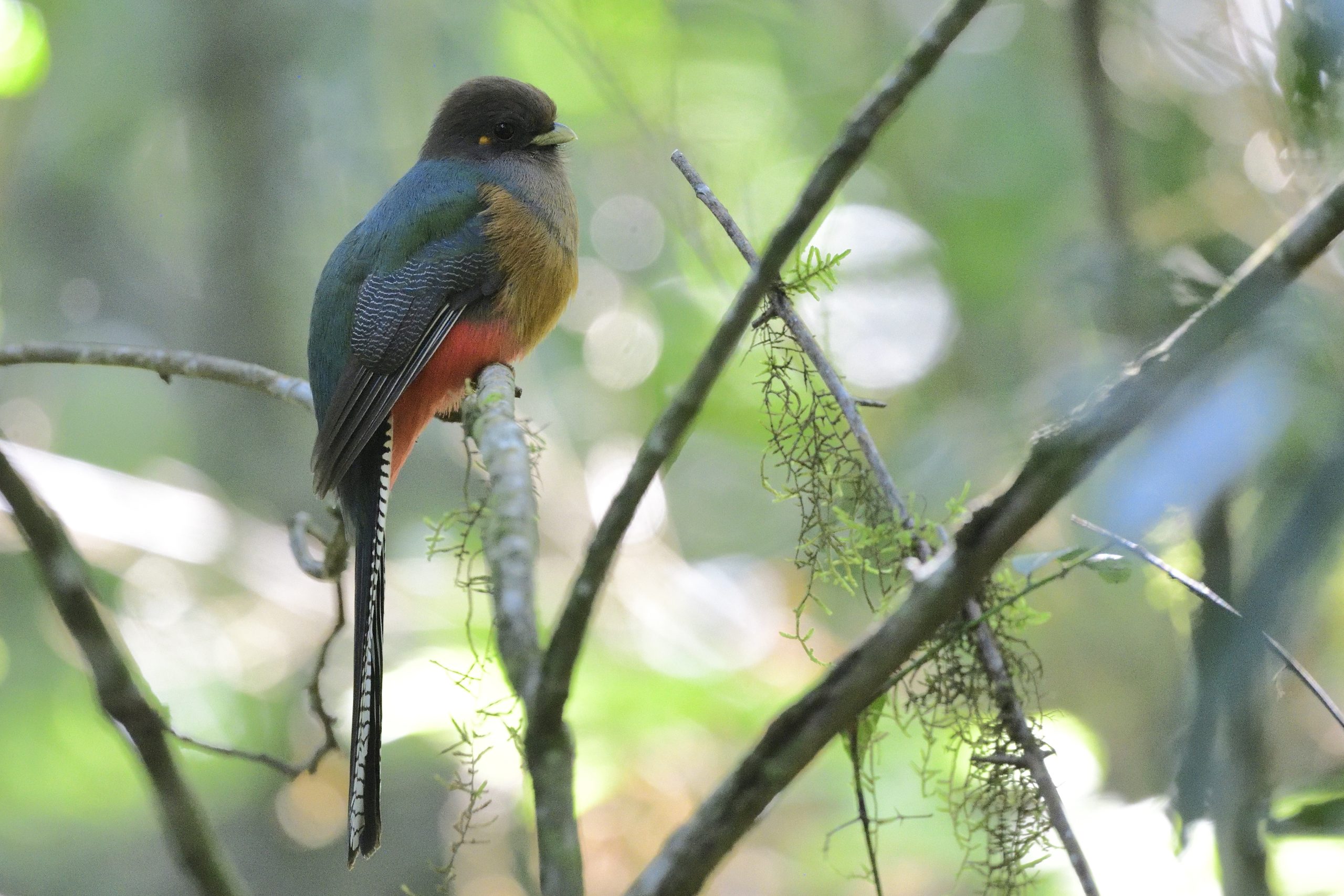
Female Bar-tailed Trogon, Apoloderma vittatum
Day 2, Monday, July 17: Kiligolf – Nyumba ya Mungu Dam – South Pare Mountains – Same
We started early in the morning and our first stop were at my normal stop close to Nyumba ya Mungu Dam. On the way we registered amongst others these species: Red-billed Firefinch, Long-tailed Fiscal, Wire-tailed Swallow, Pin-tailed Whydah, Northern Grey-headed Sparrow, Pied Crow, Lilac-breasted Roller, Yellow-billed Kite, House Crow, Western Cattle Egret, African Palm Swift, Speckled Pigeon, Wooly-necked Stork, Little Swift, Namaqua Dove, African Grey Hornbill, White-browed Sparrow-Weaver and Long-tailed Paradise Whydah. We arrived at my spot around 10:00, had breakfast while birding. Here are some of the species we observed: Red-billed Quelea, Straw-tailed Whydah, White-bellied Canary, Slate-coloured Boubou, Southern Grosbeak Canary, Emerald-spotted Wood Dove, Eastern Violet-backed Sunbird, Red-fronted Prinia, Yellow-spotted Bush Sparrow, Northern Crombec, White-browed Scrub Robin, Black-throated Barbet, African Grey Flycatcher, Pink-breasted Lark, Black-faced Waxbill, Black-necked Weaver, Fischer´s Sparrow-Lark, Hunter´s Sunbird, Yellow-breasted Apalis and Somali Bunting. On the way to Elephant Motel for lunch in Same, we picked up the following species: White-headed Mousebird, Eastern Chanting Goshawk, Spur-winged Lapwing, Wahlberg´s Eagle and Red-winged Starling. We checked in and had lunch at Elephant Motel in Same. We met again at 15:00 to drive up to my spot in South Pare Mountains. We stopped on the way for D´Arnaud´s Barbet, Lanner Falcon and Trumpeter Hornbill. We reached my spot at around 16:00 and had about 2 hours to get good view on our prime target here: The Endemic South Pare White-eye. We all got good views of them in the end. Other good birds registered this afternoon included: Silvery-cheeked Hornbill, Rock Martin, Sharpe´s and Kenrick´s Starling, Singing Cisticola, Stripe-faced Greenbul, Moustached Tinkerbird, Harlaub´s Turaco, Cinnamon-chested Bee-eater, African Harrier-Hawk, Evergreen Forest Warbler, Lesser Honeyguide and Black Sparrowhawk. At precisely 18:00 we started our drive down the mountain and arrived back at the Motel just before darkness. We ordered dinner, went to our room and freshened up. I returned early to my room to have a good nights sleep. No pictures from Day 2. All in all, I took very few pictures on this trip. Niall is an avid photographer, Justin´s Camera broke on the firstday, Richard did not take many pictures and my lens broke later on the trip. Besides, the first part of the trip is my most popular trip, so I have good pictures of most of the birds from before.
Day 3, Tuesday, July 18: Same to Magamba Forest West Usambara
Our first stop of the day were my normal spot just outside Mkomazi National Park. We had quite a few targets to find there. Here are some of the birds we registered: Red-and-yellow Barbet, Northern White-crowned Shrike, Eastern Black-headed Batis, Abyssinian Scimitarbill, Von der Decken´s Hornbill, Brubru, Eastern Violed-backed Sunbird, Bare-eyed Thrush, Reichenow´s Seed-eater, Black-necked Weaver, Southern Grosbeak Canary, Mouse-coloured Penduline Tit, African Grey Flycatcher, Pink-breasted Lark, Black-faced Waxbill, Eastern Chanting Goshawk, Green-winged Pytilia, Lesser Masked Weaver, Cardinal Woodpecker, Tiny Cisticola, Blue-capped Cordon-bleu, White-bellied Go-away-bird, Chinspot Batis, African Paradise Flycatcher, Grey Wren-Warbler, Ayre´s Hawk-Eagle, Red-fronted Prinia, Somali Bunting, Tsavo Sunbird, Grey-headed Bushshrike, Black Cuckooshrike, Northern Brownbul, Slate-coloured Boubou, Straw-tailed Whydah and Black-bellied Sunbird. We were now back at the car, but it was still a little early for breakfast, so I suggested a little drive toward Mkomazi NP. Here are some of the birds we observed: Amethyst Sunbird, Hunter´s Sunbird, Rattling Cisticola, Fischer´s Starling, Spot-flanked Barbet, White-headed Mousebird and D`Arnaud´s Barbet. We drove back to the Motel, ordered Breakfast, packed, had breakfast and was soon on our way to Magamba Forest in West Usambara. Here are some of the birds we saw while driving: Lanner Falcon, Spur-winged Lapwing, Long-crested Eagle and African Black Swift. We stopped at my spot before Soni and had Eastern Golden Weaver, Mocking Cliff Chat, Collared Sunbird and Grey-olive Greenbul. We continued to Soni and did some shopping for the 2 nights we were going to camp in Magamba Forest. We drove straight to our camp and arrived around 15:00. Here are some of the birds we observed in Camp: Southern Citril, Cape Robin-Chat, Streaky Seed-eater, Black-fronted Bushshrike, Usambara Double-collared Sunbird, Yellow-bellied Waxbill, African Dusky Flycatcher, African Stonechat and Black Saw-wing. Camp were now set up and we took a walk up from Camp. On the afternoon walk we found amongst others: Mountain Buzzard, Red-capped Forest Warbler, White-tailed Crested Flycatcher, Spot-throat (heard), Fülleborn´s Boubou, Bar-throated Apalis, Yellow-throated Woodland Warbler, Mountain Greenbul, Hartlaub´s Turaco, Black-headed Apalis, Olive Sunbird, Evergreen Forest Warbler, Olive Woodpecker and at night African Wood Owl. I had started boiling local Chicken before we walked. I prepared dinner and we relaxed by the fire place before we took an early night.
Some pictures from Day 3
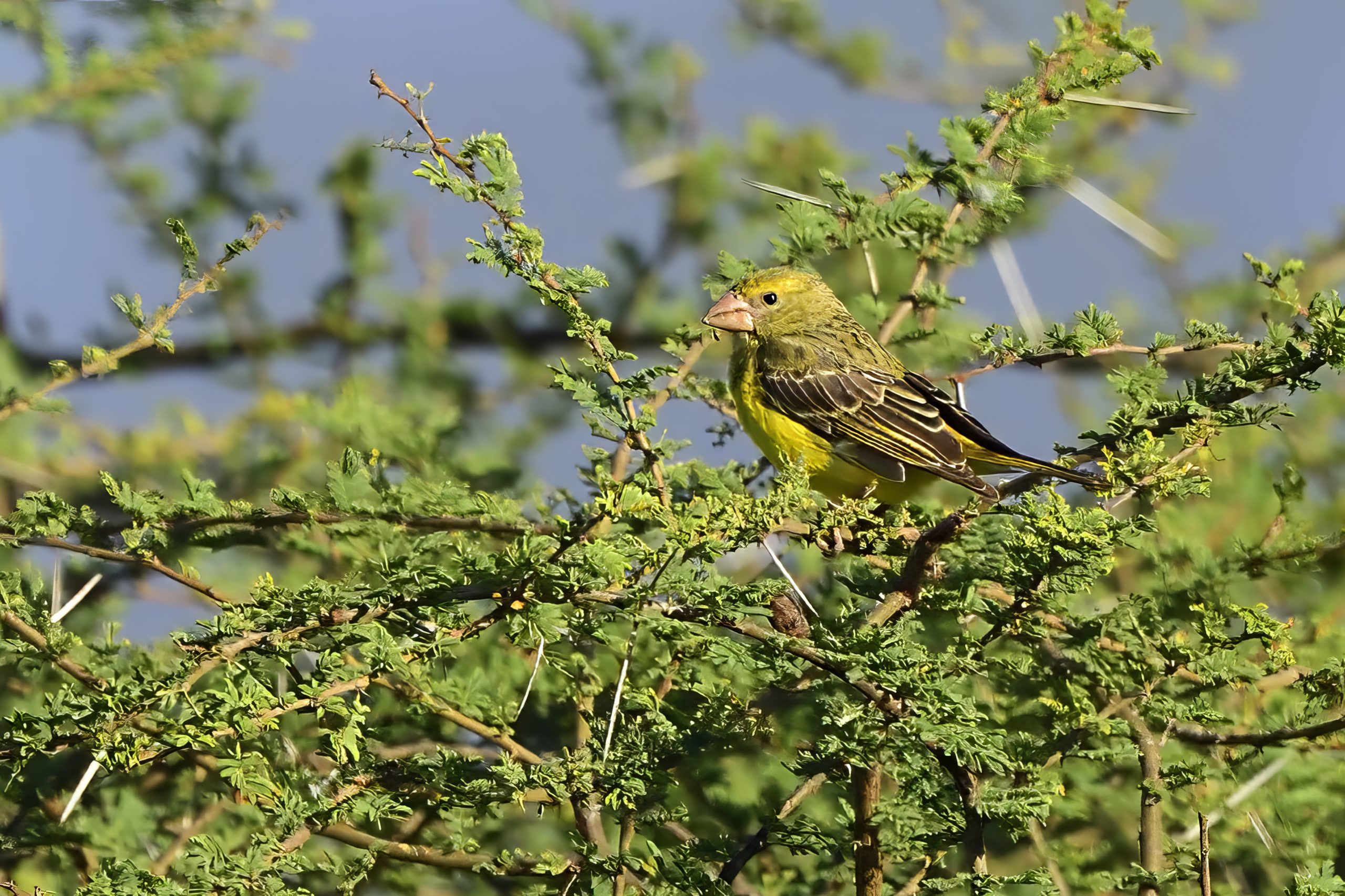
Southern Grosbeak Canary, Chritagra buchanani – Endemic to S Kenya and N Tanzania
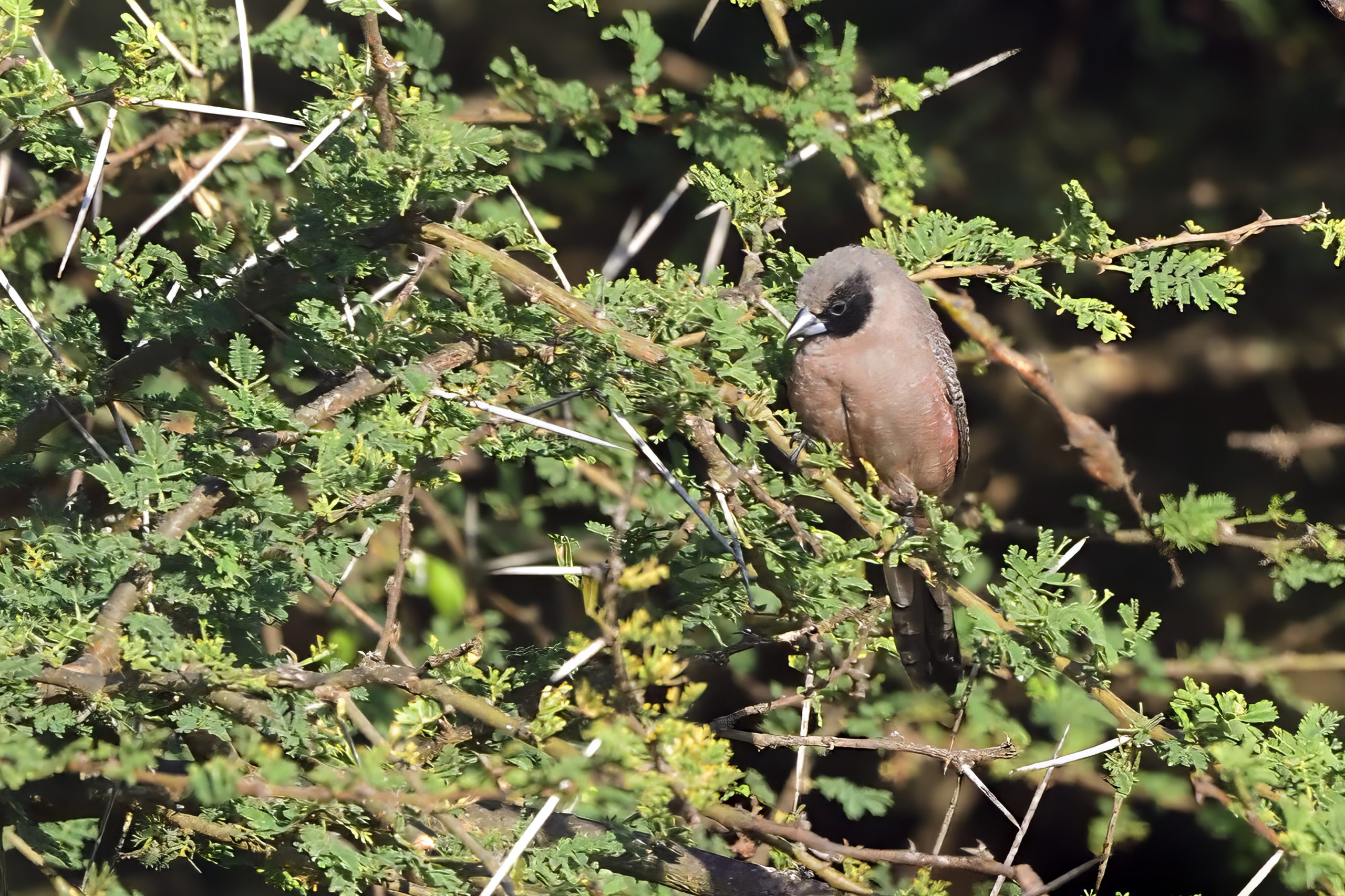
Black-faced Waxbill, Brunhilda erythronotos
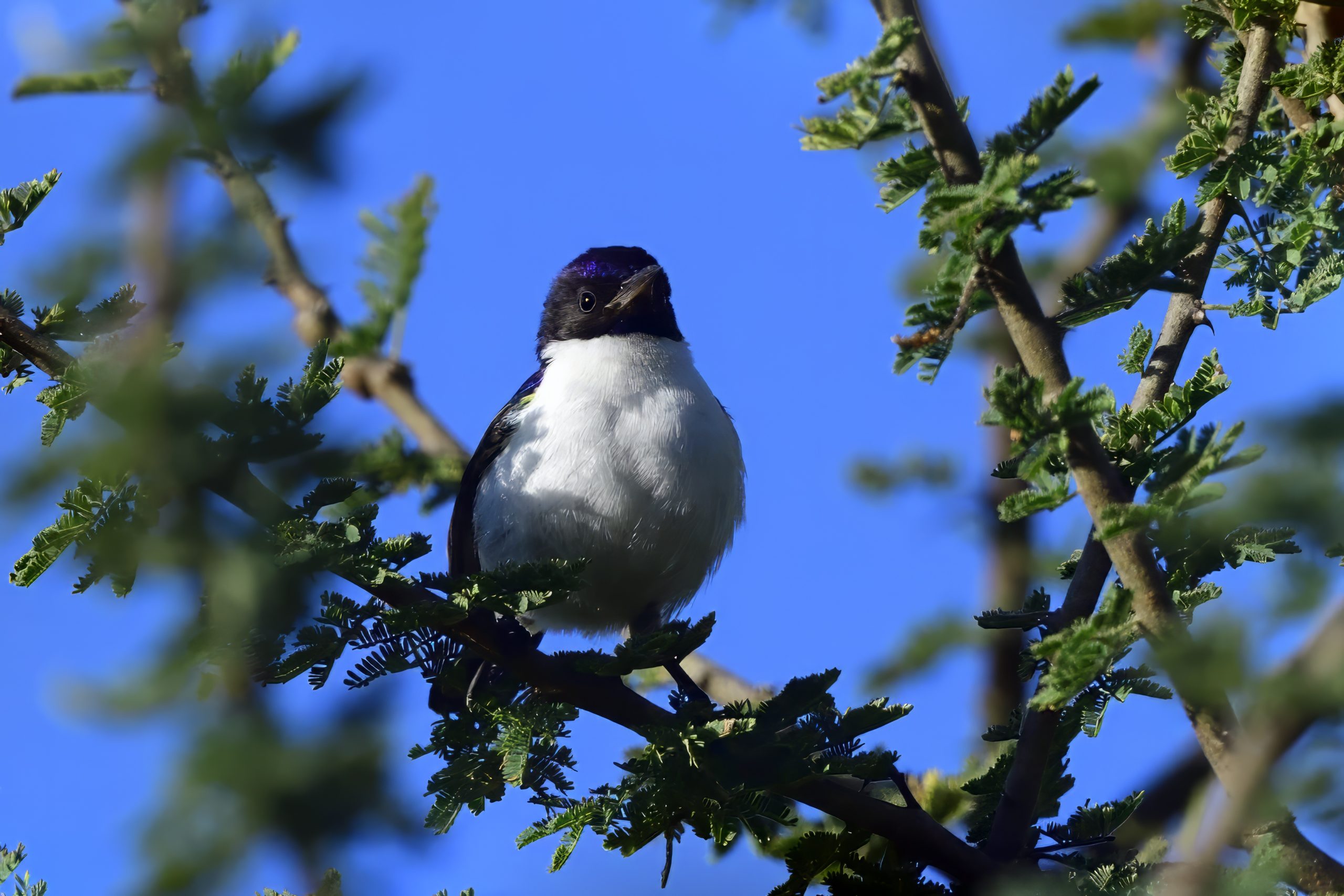
Eastern Violet-backed Sunbird, Anthreptes orientalis – Endemic to NE Africa
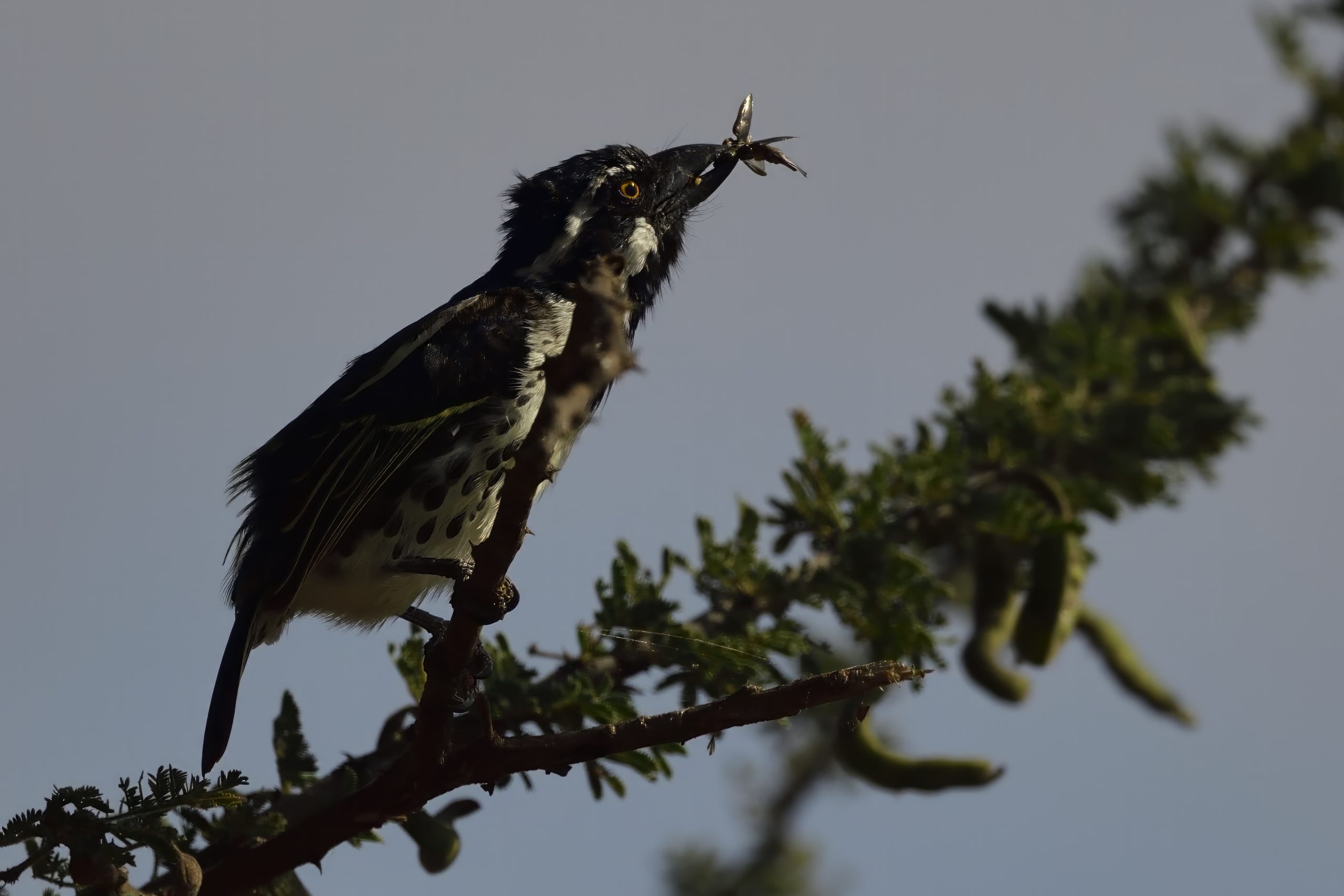
Spot-flanked Barbet, Thricholaema lacrymosa – Endemic to East Africa
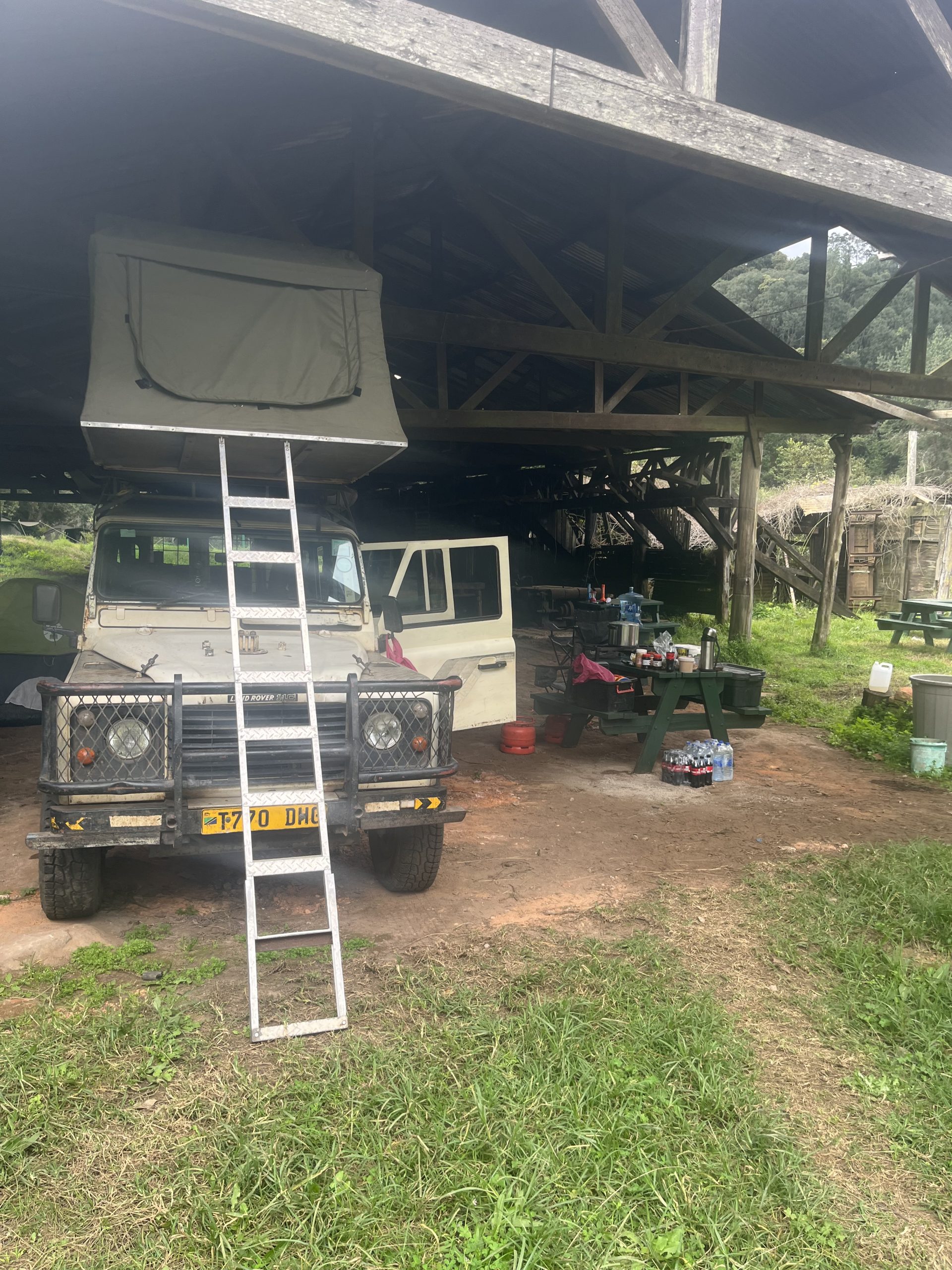
Camp in Magamba Forest, West Usambara
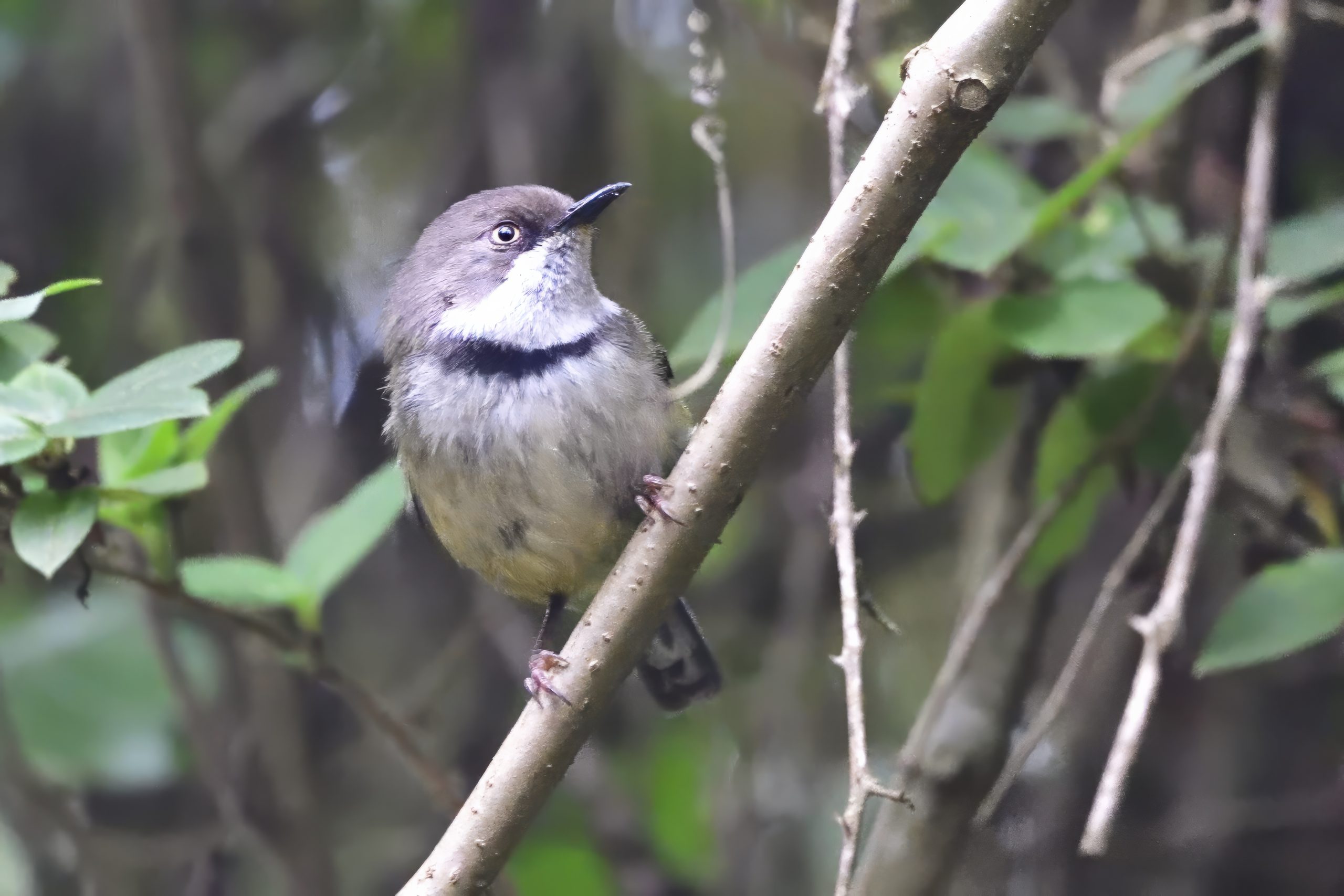
Bar-throated Apalis, Apalis thoracica
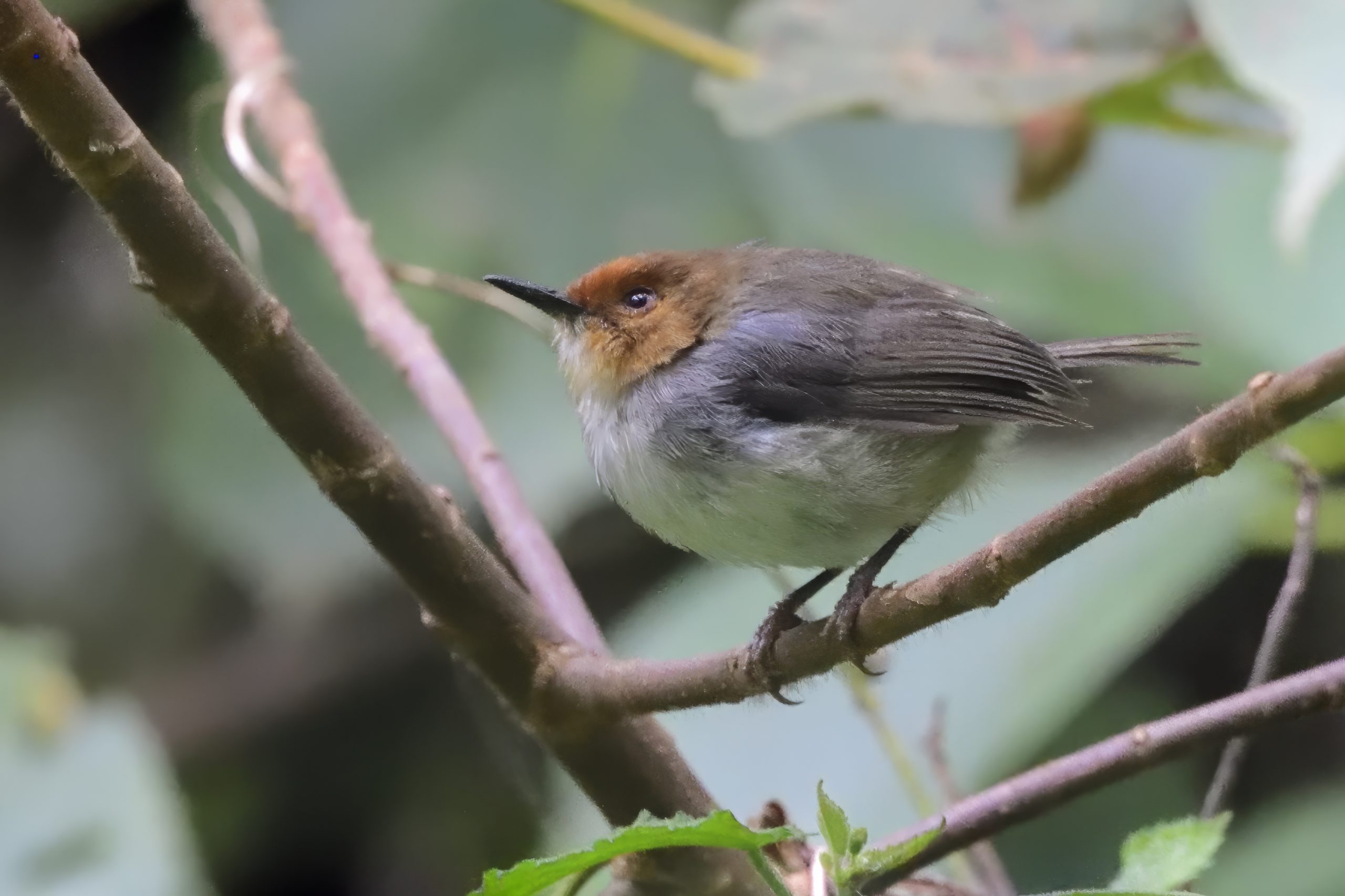
Red-capped Forest Warbler, Artisornis metopias – Endemic to Eastern Arc Mountains of Tanzania and N Mozambique
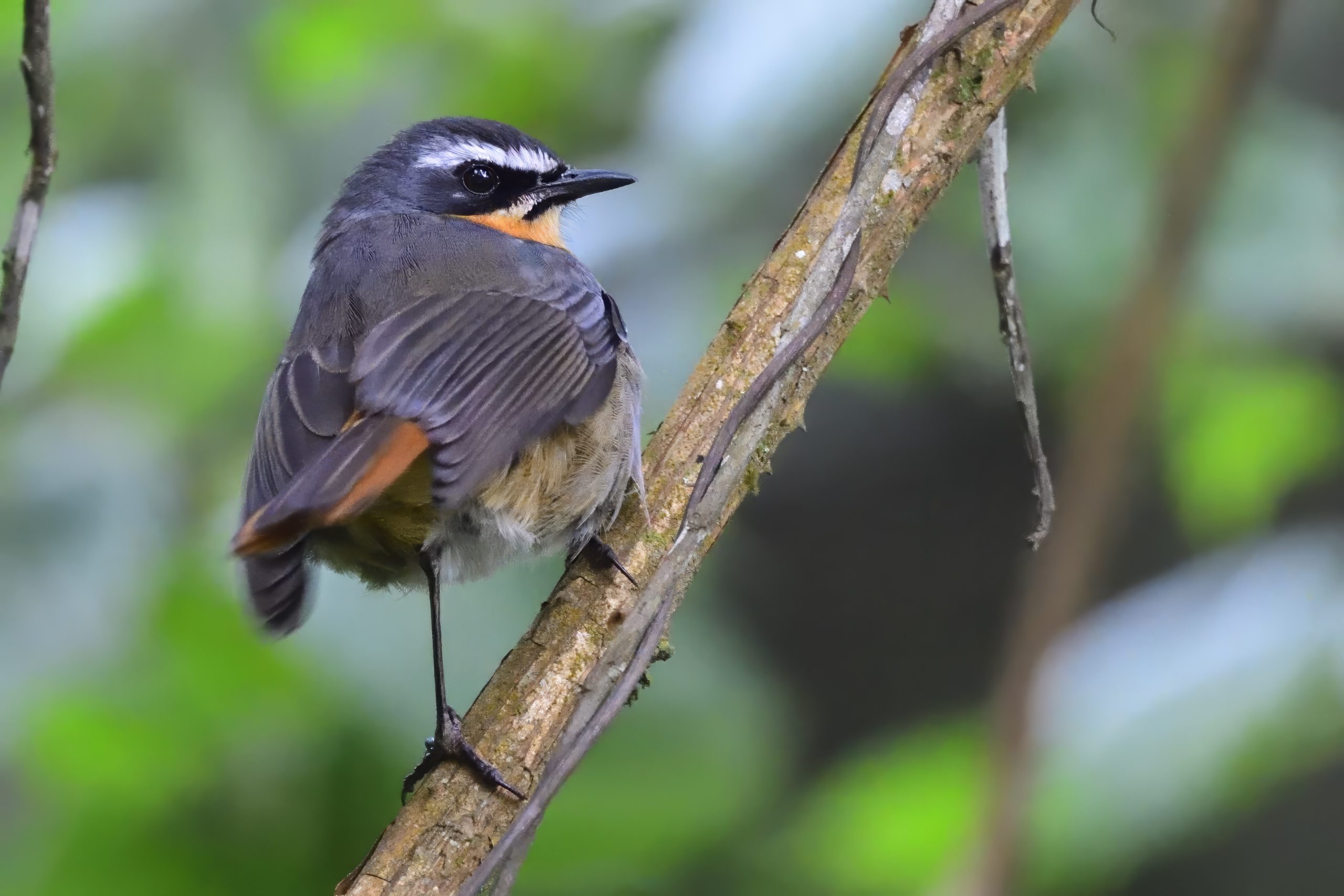
Cape Robin-Chat, Cossypha caffra
Day 4, Wednesday, July 19: Magamba Forest
We met for coffee at 06:45. We did a morning walk, but did not add many new species for the site: African Olive Pigeon and Forest Batis. We went back to camp for breakfast. After breakfast, we tried again my normal spot for Usambara Thrush and this time we got lucky. We tried the new path from camp and had very nice views of Spot-throat. We were struggling to find Usambara Akalat, but in the end we got views. We went back to camp for lunch. After lunch, we decided to walk downhill. We did a long walk in search of Usambara Weaver, but no luck. Other birds observed included: Lesser Honeyguide, Red-faced Crimsonwing, Waller´s Starling, Grey Cuckooshrike, Placid Greenbul and Black-fronted Bushshrike. We heard the Montane Tiny Greenbul, but never got any views. We returned to camp and I made dinner. We had dinner by the bonfire and retired early to bed.
One picture from Day 4
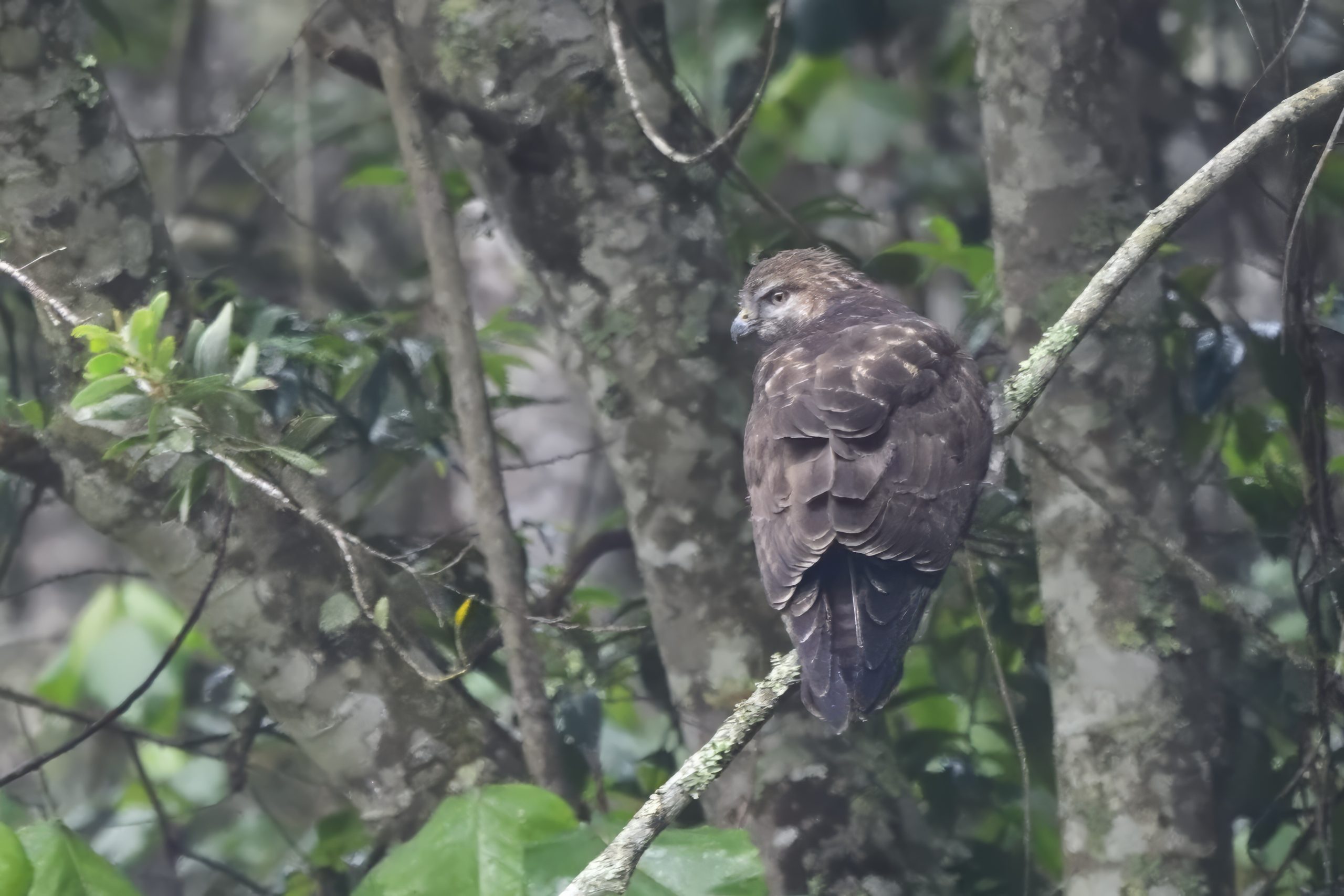
Mountain Buzzard, Buteo oreophilus – Endemic to NE Africa
Day 5, Thursday, July 20: Magamba Forest, West Usambara to Amani Forest, East Usambara
We met for Coffee again at 06:45. We more or less only had 2 target birds left. One of them Usambara Weaver we found easily at a place we had tried several times before. We did not find any other new birds that morning, so we returned to camp for breakfast. After breakfast, we packed camp. When almost everything was finished packed, the boys wanted to walk downhill in search for the Mountain Tiny Greenbul. I finished packing camp and the Land Rover and met the boys on the way down. We tried a little more for this elusive Greenbul, but no luck. We got in the car and started the drive to Amani Forest in East Usambara. We stopped just north of Muheza for Coastal Cisticola which as always were easy to find. Other birds at the Cisticola site included: Black-winged Red Bishop, Bronze Mannikin, Striped Kingfisher and Pin-tailed Whydah. We drove up to the headquarter and picked up Long-crested Eagle and Mountain Wagtail on the way up. We arrived in camp around 15:00. We settled in and then took a bird walk in the botanical garden. Here are some of the birds observed: Green Barbet, Silvery-cheeked Hornbill, Dark-backed Weaver, Waller´s Starling, Green-headed Oriole, Rock Martin, Uluguru Violet-backed Sunbird, Red-backed Mannikin, Purple-banded Sunbird, African Green Pigeon, Southern Citril, Lanner Falcon, Spectackled Weaver, Pale Batis, White-eared Barbet, Green Tinkerbird, Little Greenbul, African Harrier Hawk and Brown-hooded Kingfisher. We were back in camp before dark, freshened up, had dinner and went early to bed. No sign of over flying Olive Ibis.
Some pictures from Day 5:
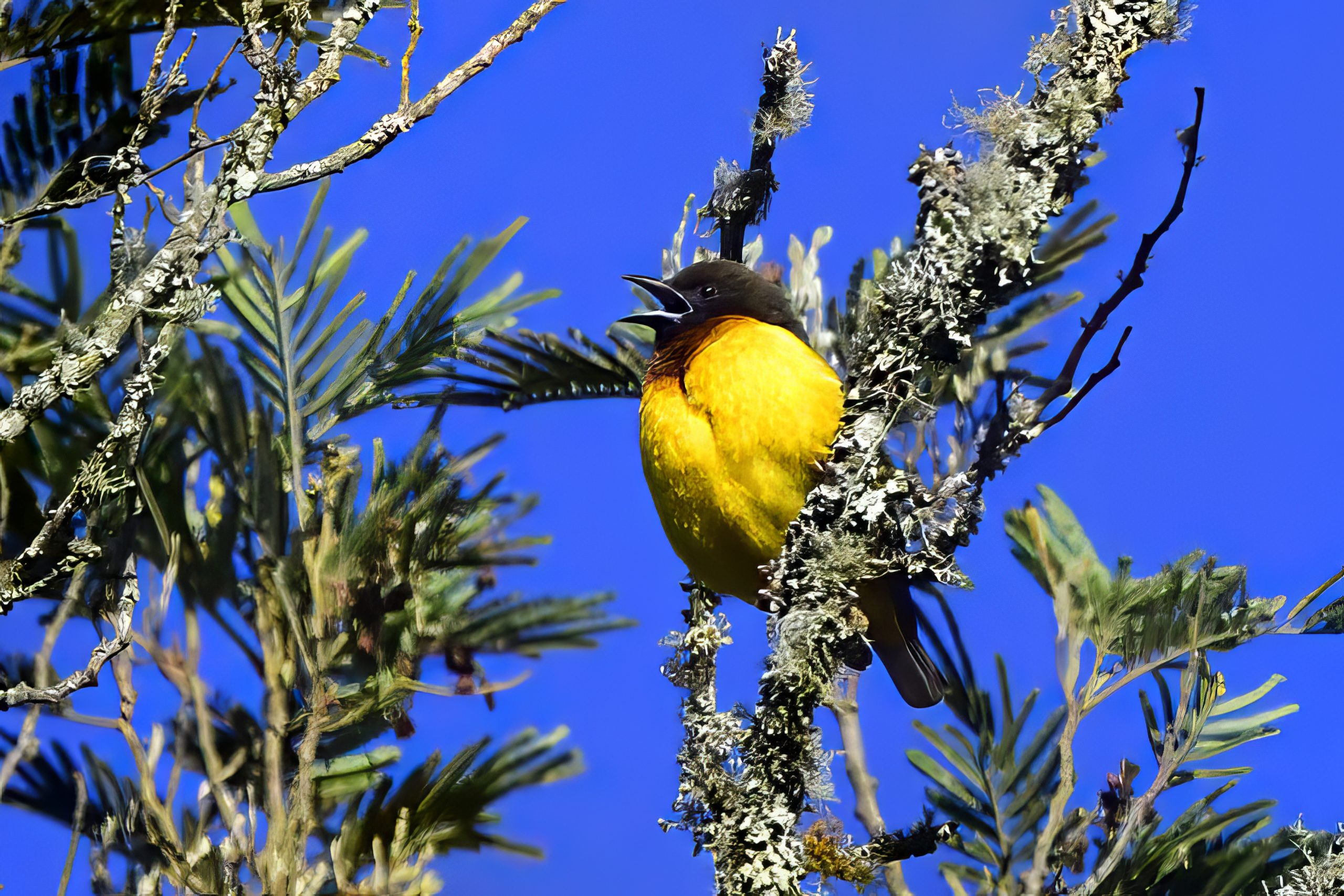
Usambara Weaver, Ploceus nicolli – Endemic to Eastern Arc Mountains of Tanzania
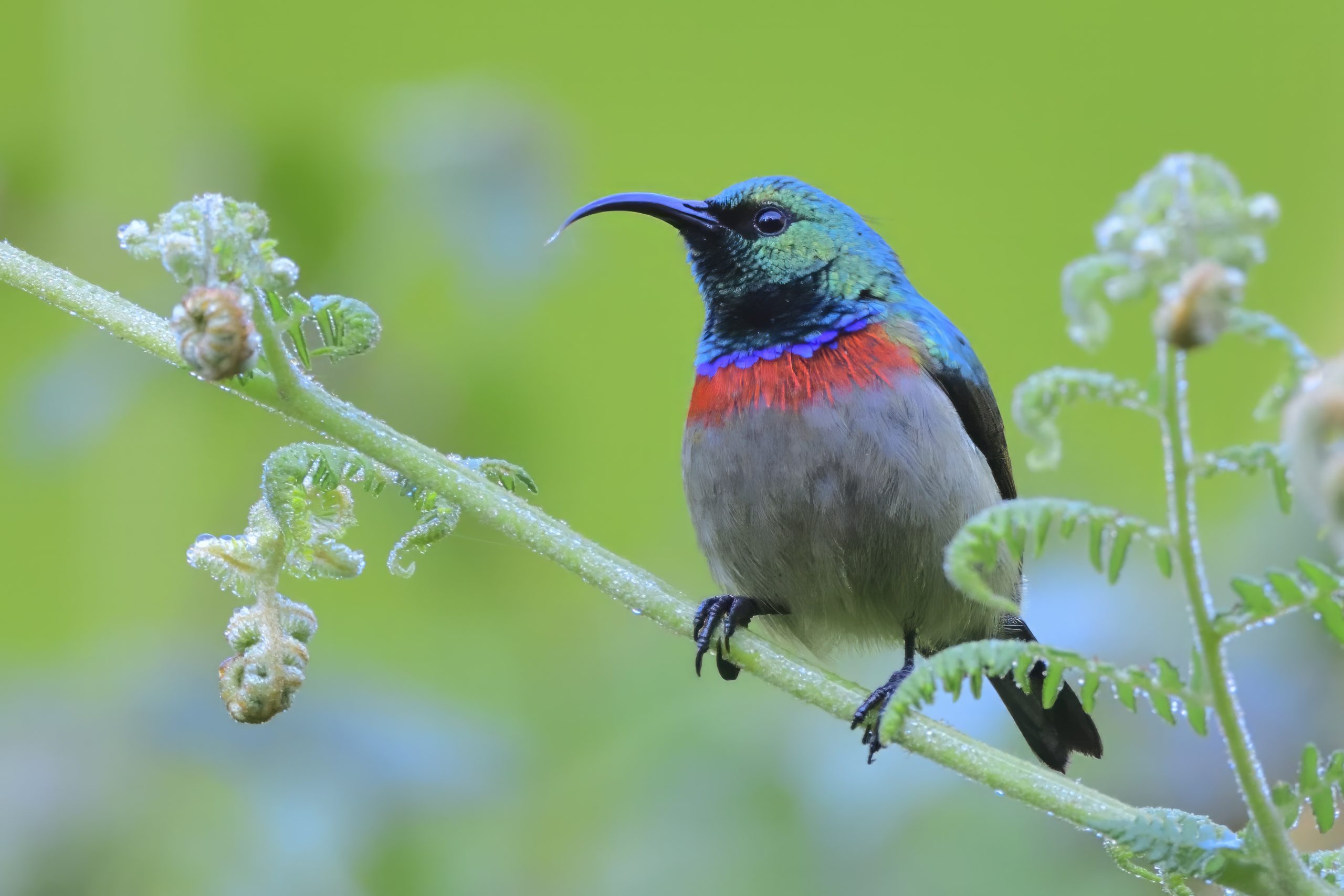
Usambara Double-collared Sunbird, Cinnyris usambaricus – Endemic to South Pare and Usambara Mountains of Tanzania
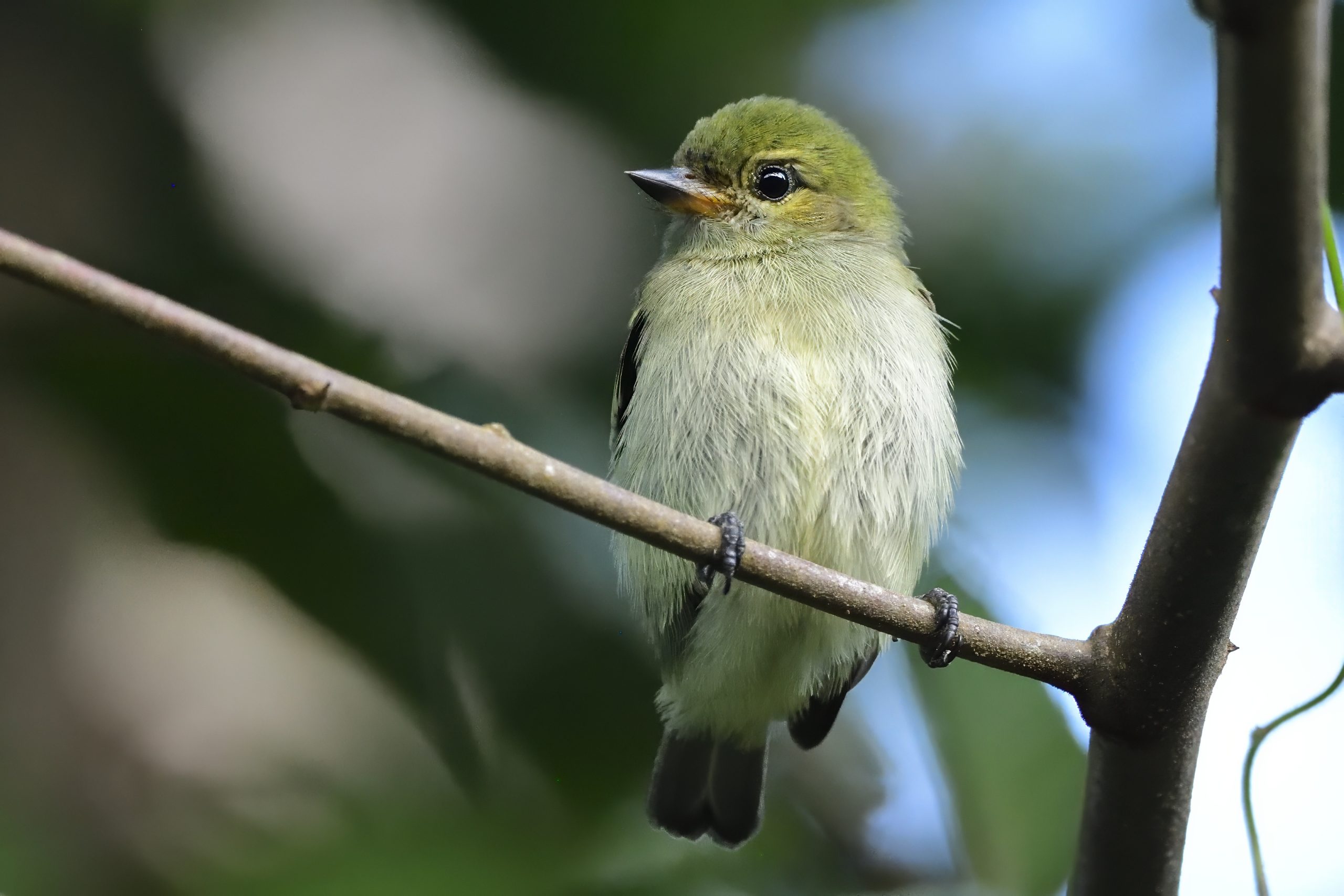
Green Tinkerbird, Pogoniulus simplex
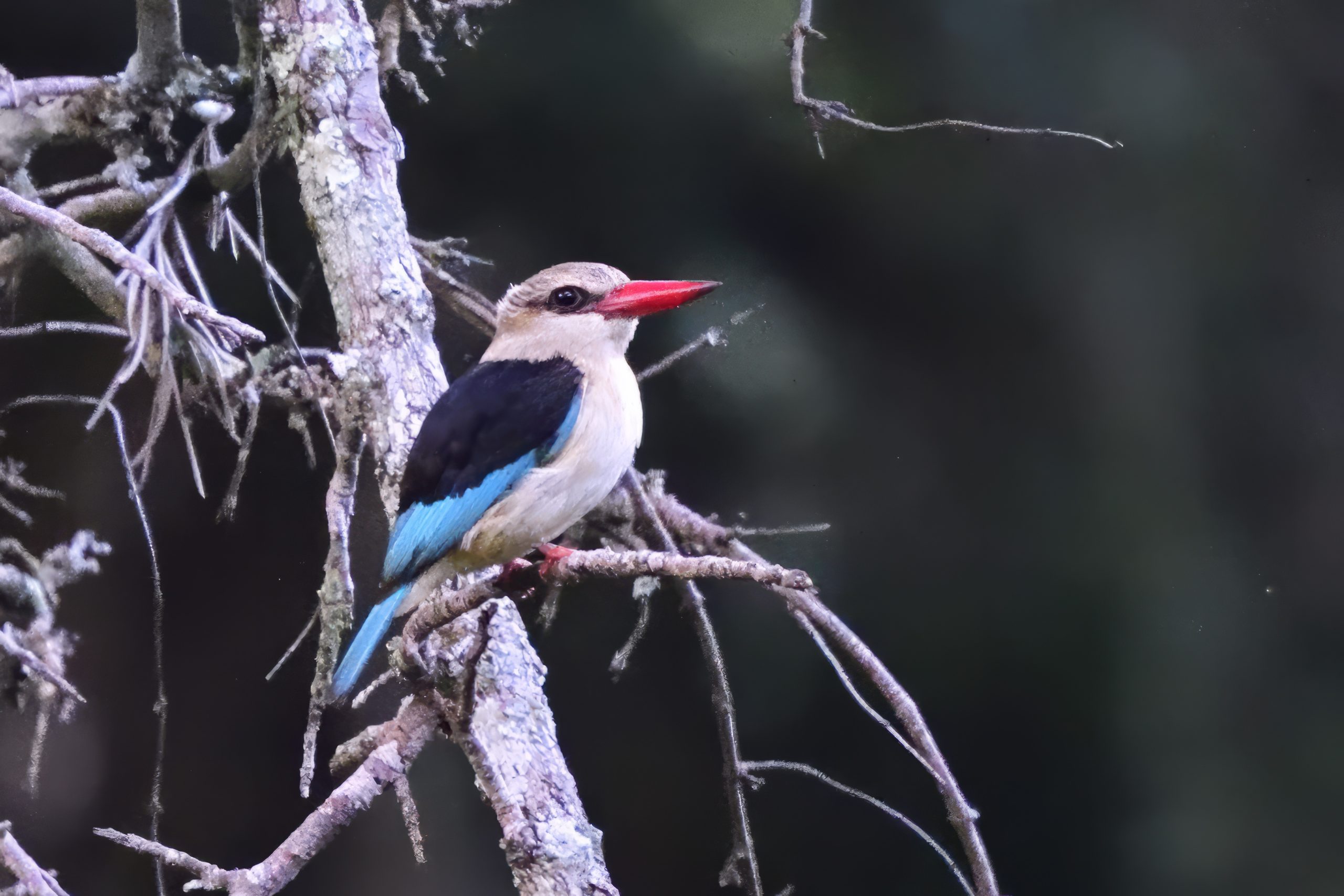
Brown-hooded Kingfisher, Halcyon albiventris
Day 6, Friday, July 21, Amani Forest, East Usambara.
We met early for coffee, grabbed our packed breakfast and started driving to our morning spot. We arrived at our destination just before 08:00. Our first observation were a Cabanis´s Bunting. I knew our main targets would start singing a little later so we took a walk for some other targets. Here are some of the birds we observed: Red-faced Cisticola, Black-bellied Starling, Tambourine Dove, Fischer´s Turaco, Green-headed Oriole and Black Sparrowhawk. We walked towards the car and heard as predicted the call of several Kretchmer´s Longbill. All the boys got good views. Our other main target the Long-billed Forest Warbler used to be easy to get in the area. However; lately I have been struggling to get good views. After quite some searching we all got good views. It were time to return to the car and drive to the area for our next target bird. We drove up the normal road, but found that a huge tree had fallen over the road. I knew the bird were in the territory so I suggested we just started to walk. It did not take us long to get the first view of Sharpe´s Akalat. Not all of the three were happy with the view, so we continued a little up the path and all of them got good views. We drove back to camp and had time for a little walk before lunch. On the way back we picked up a Half-collared Kingfisher. On our small walk we encountered Palm-nut Vulture, Crowned Eagle, Amani Sunbird, Banded Green Sunbird and Amethyst Sunbird. We had most of our targets in the botanical garden in box before lunch so I decided that we would try the lower forest in the afternoon. On my trips, I normally stay 3 nights in Amani, but in order to accommodate the quite extensive itinerary on the trip, I cut it one day short. Here are some of the birds we found that afternoon in the lower forest: Southern Banded Snake Eagle, Grey Cuckooshrike, Fischer´s Greenbul, African Golden Oriole, Chestnut-fronted Helmetshrike, Tanzanian Illadopsis, Green-headed Oriole, Black-headed Apalis, Usambara Hyliota, Little Yellow Flycatcher, Dark-backed Weaver, Black-winged Red Bishop, Common Waxbill, Green Malkoha, Lanner Falcon and Little Spotted Woodpecker. We drove home to camp in time to check for an Olive Ibis fly over. No such luck though. We freshened up, had dinner and I went to bed early. Then I heard the Usambara Eagle-Owl call very close to my room. I warned the others and they had great views.
Some pictures from Day 6:
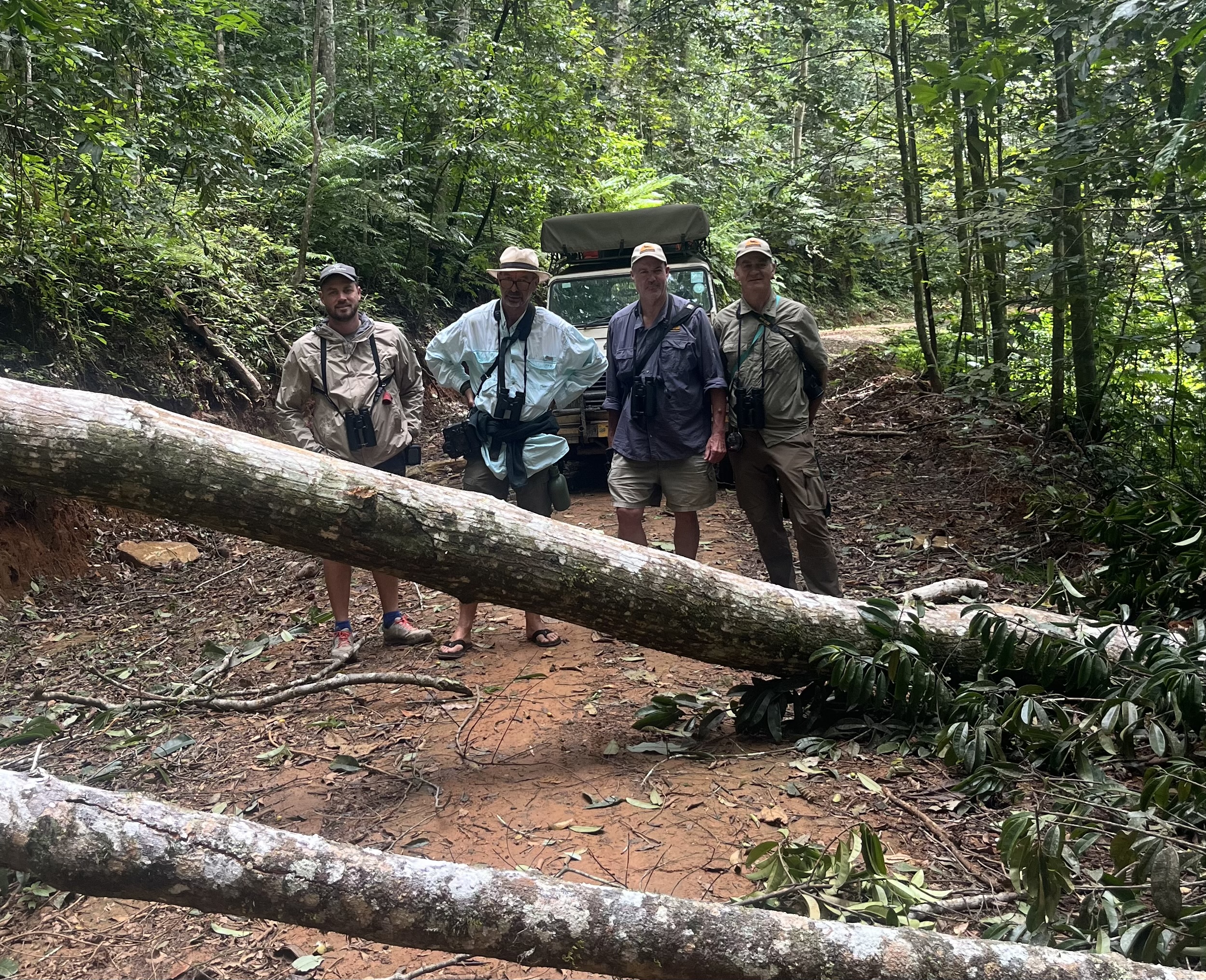
On the way to the Sharpe´s Akalat spot, we were blocked
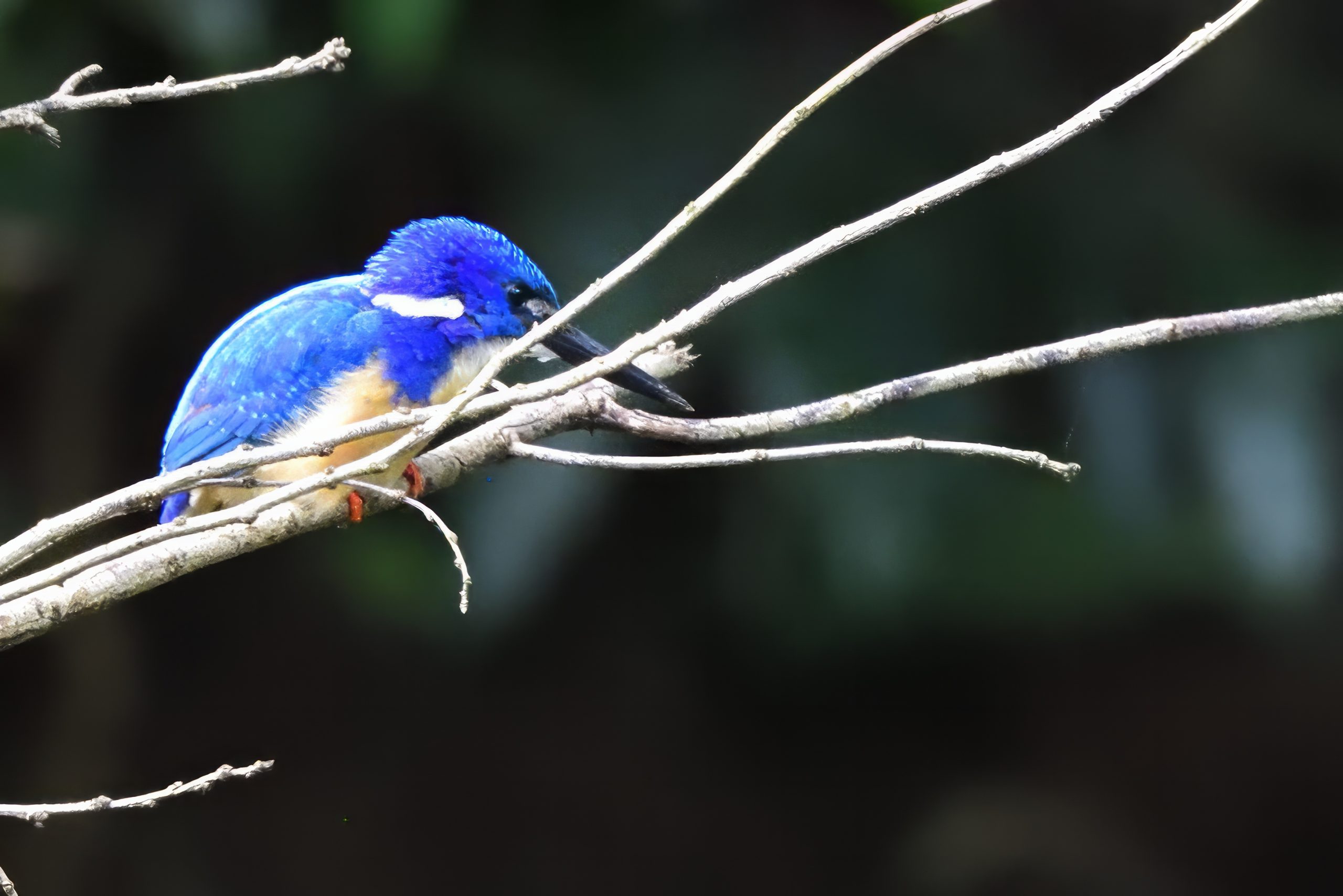
Half-collared Kingfisher, Alcedo semitorquata
Day 7, Saturday, July 22, Amani Forest, East Usambara to Tan-Swizz Camp in Mikumi.
We had a long drive that day, but had time for some birding in the lower forest on the way down the mountain. Here are some of the new birds we registered for Amani: Black-and-white Shrike Flycatcher, East Coast Boubou, Lowland Tiny Greenbul and Plain-backed Sunbird. It were time to start the long drive. We stopped briefly in Muheza to get some supplies and then drove on. We arrived at Tan-Swizz in Mikumi around 18:00. We set up camp and managed to do a little birding: Northern Grey-headed Sparrow, Blue Waxbill, White-browed Robin-Chat and Collared Palm Thrush were ticked before we freshened up and had dinner at the restaurant.
Some pictures from Day 7:
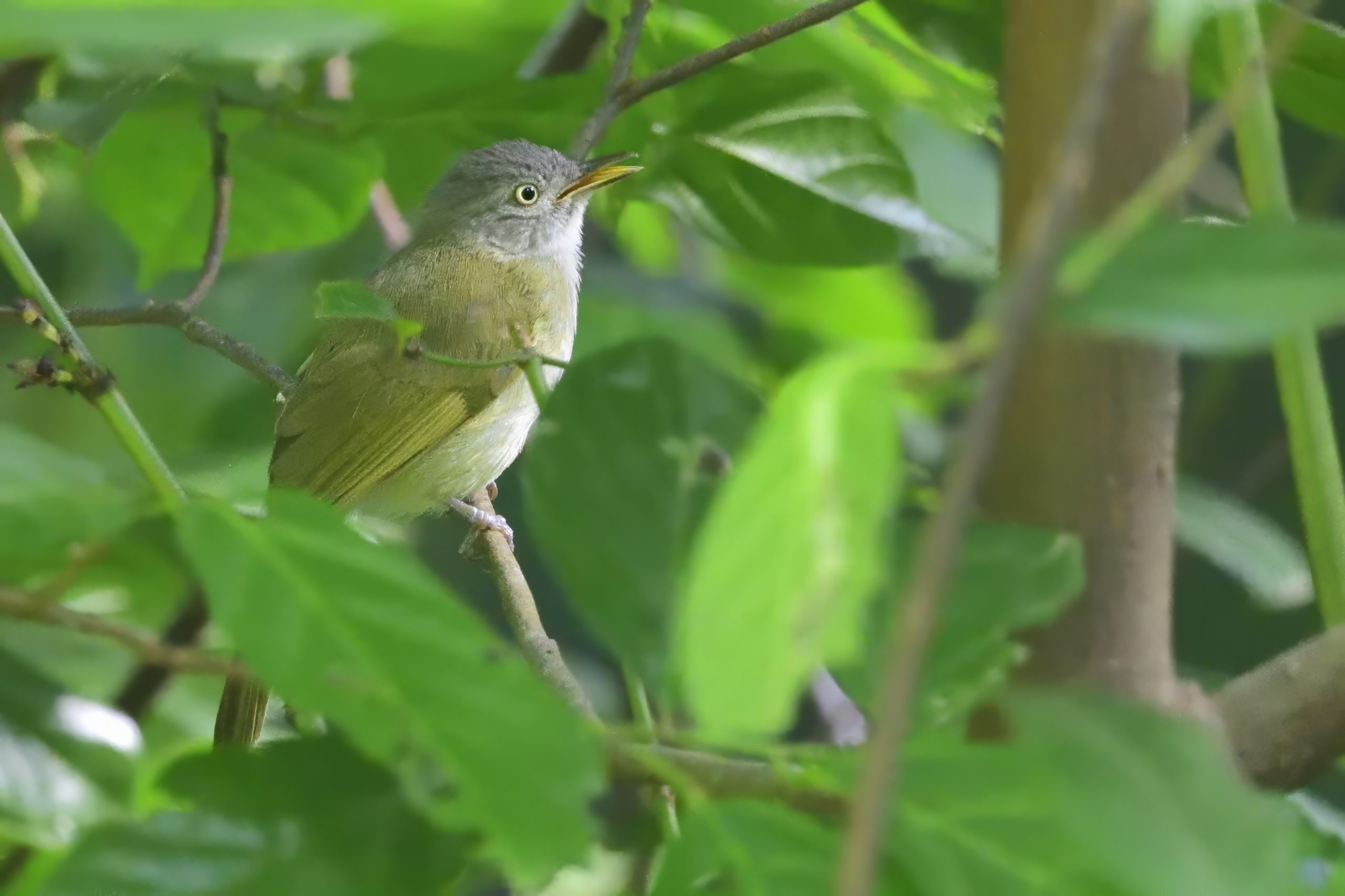
Lowland Tiny Greenbul, Phyllastrephus debilis
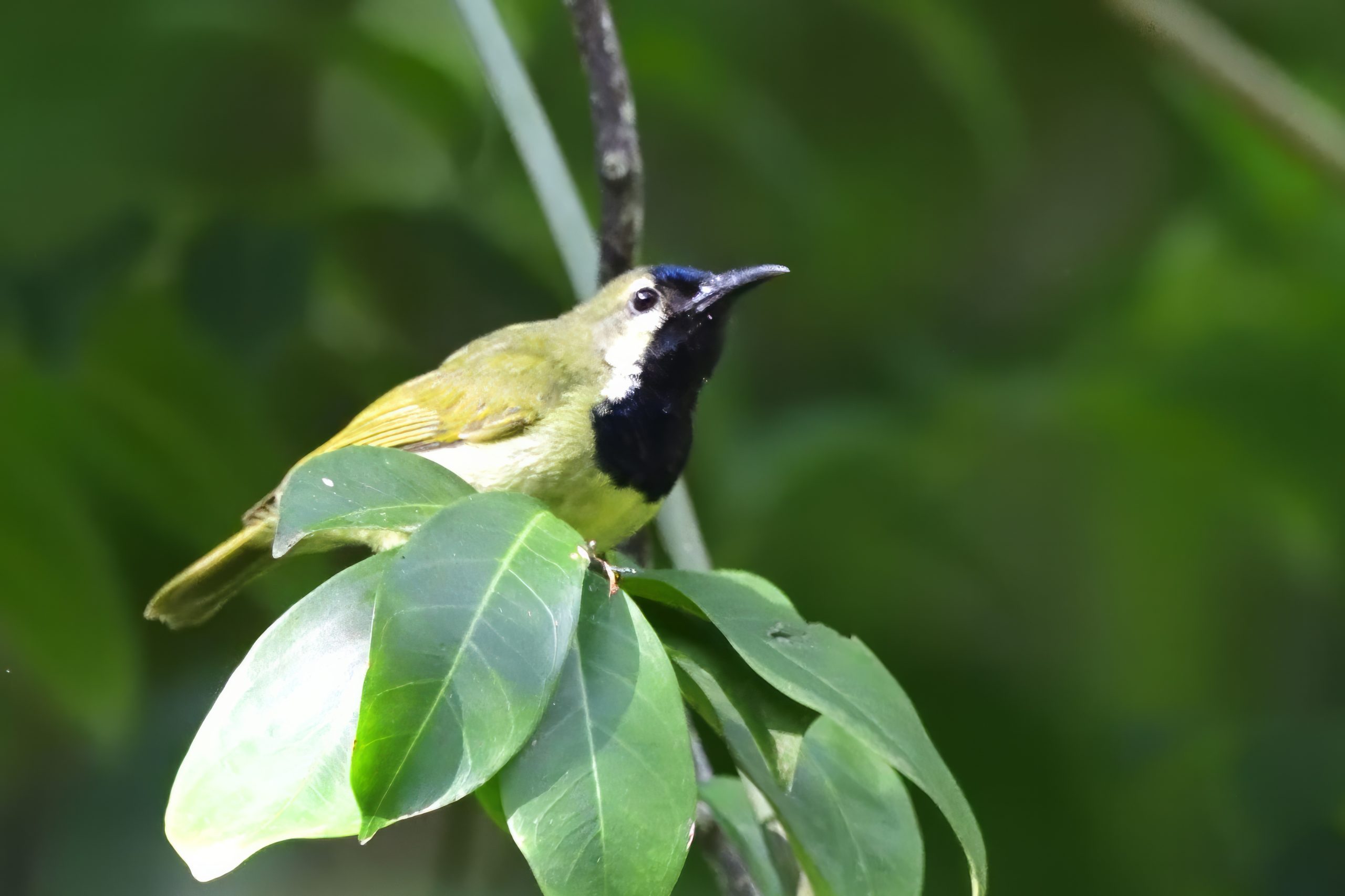
Plain-backed Sunbird, Anthreptes reichenowi
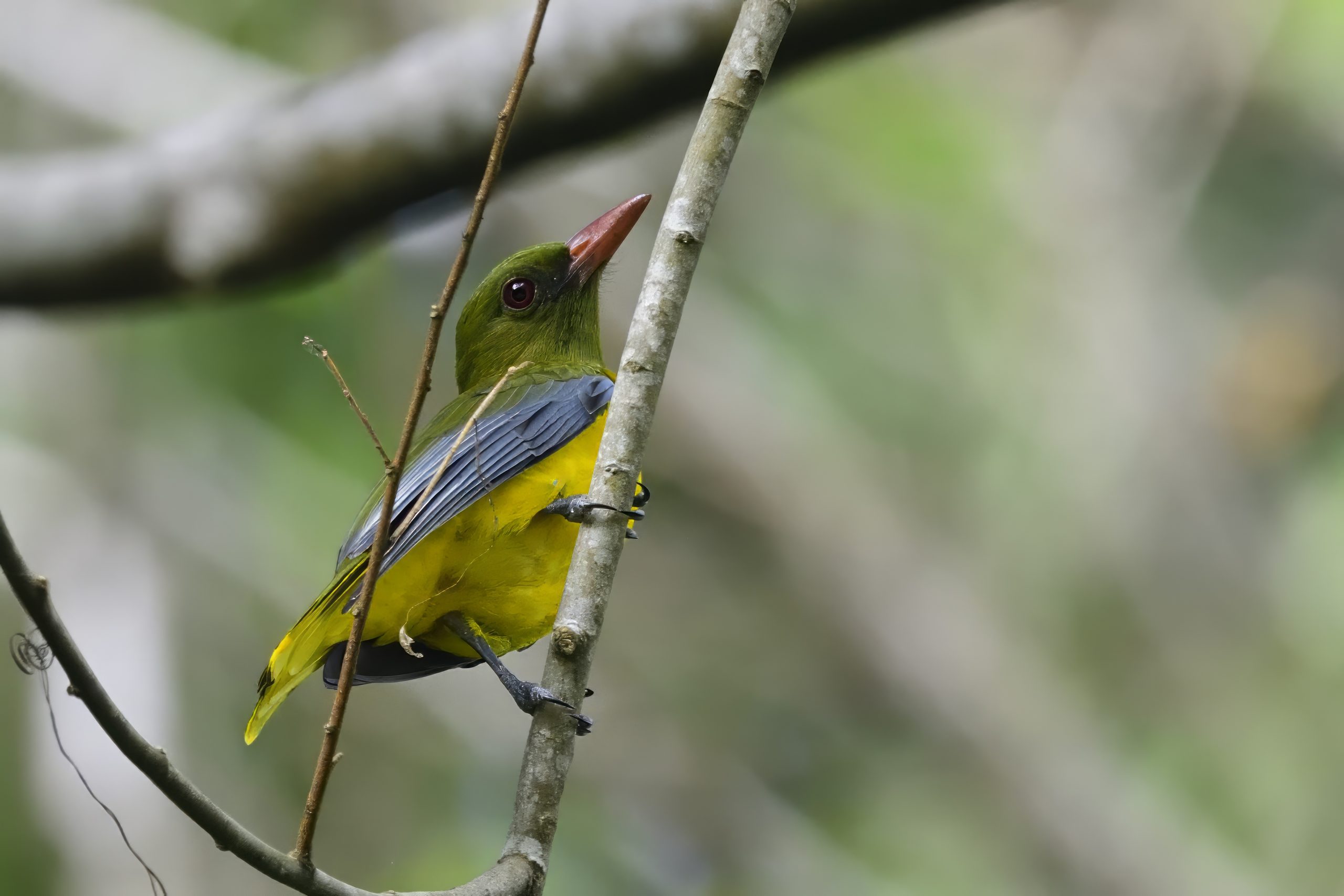
Green-headed Oriole, Oriolus chlorocephalus
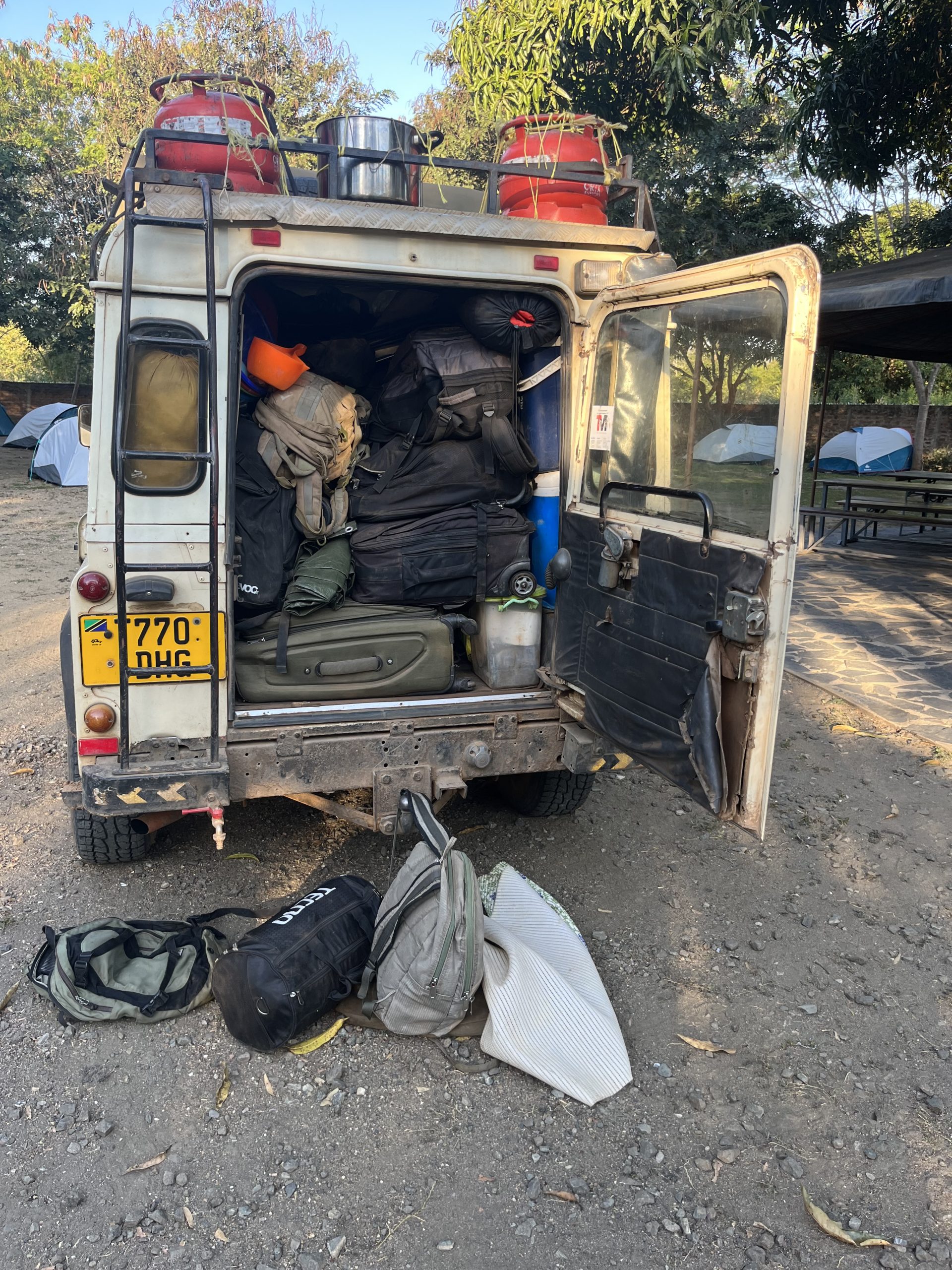
I have aquired a PhD in packing my Land Rover Lizzie
Day 8, Sunday, July 23, Mikumi to Ifakara and back to Mikumi.
We drove first to the Miombo Woodland just north of Mikumi. Here are some of the birds we picked up: Dark Chanting Goshawk, Green Wood Hoopoe, Arnot´s Chat, Yellow-throated Bush Sparrow, Neddicky, Stierling´s Wren-Warbler, Cabanis´s Bunting, Green-capped Eremomela, Pale Batis, Red-faced Crombec, Yellow-bellied Eremomela, Southern Black Flycatcher, Yellow-bellied Hyliota, Cinnamon-breasted Tit, Golden-tailed Woodpecker, Crested Barbet, Grey Penduline Tit, Scarlet-chested Sunbird, White-breasted Cuckooshrike and African Hoopoe. It were now 10:00 and time to head for Ifakara. Here are some of the birds registered at Ifakara: Purple Heron, African Openbill, African Fish Eagle, Yellow-billed Stork, Black-winged Kite, Kilombero Weaver, Zanzibar Red Bishop, Orange-breasted Waxbill, Whit-crowned Lapwing, African Wattled Lapwing, Kilombero Cisticola, Malachite Kingfisher, Squacco Heron, White-tailed Cisticola, Collared Pratincole, Common Reed Warbler, Little Rush Warbler and Giant Kingfisher. We returned to Tan-Swiss in Mikumi, had a lovely dinner and retired early to bed.
No Pictures from Day 8.
Day 9, Monday, July 24, Mikumi to Morogoro
Breakfast at Tan-Swiss that morning before revisiting the Miombo Woodland just near Mikumi. Some of the birds observed included: Pale-billed Hornbill, Brown-headed Parrot, Hofmann´s Sunbird, Black-eared Seed-eater, Bearded Woodpecker, Greater and Miombo Blue-eared Starling, Brown Snake Eagle, Cinnamon-breasted Tit, Western Violet-backed Sunbird, Greater Honeyguide, Lizard Buzzard, Black-crowned Tchagra, Jameson´s Firefinch, Arrow-marked Babbler and Little Spotted Woodpecker. We had lunch at camp, packed, relaxed a little and were soon on the way to Morogoro where we were going to stay at Nguzo campsite. Our original plan were to go to Bunduki Camp that day, but the guide had another idea and the boys were comfortable with that idea. This were a spot were I had never been before, so I also welcomed the idea to explore another site, namely the trail to Bondwa Peak.
No pictures from Day 9
Day 10, Tuesday, July 25, The trail to Bondwa peak to Gairo.
Well, the birding were excellent, but the logistics were not quite that good. We had 45 gruelling minutes on a boda boda (Motorcycle) to get up to the trail. A drive I could easily had done with my Land Rover. Once at the head of the trail, we still had to walk for quite a while to get to the forest. Some of the birds we found before the forest: Black Cuckooshrike, Cape Robin-Chat, Southern Citril, Trilling Cisticola, African Firefinch, Yellow Bishop, Yellow-bellied Waxbill, Bertram´s Weaver and Variable Sunbird. Once in the forest: Green Barbet, White-browed Coucal, Livingstone Turaco, Placid Greenbul, White-starred Robin, Black-fronted Bushshrike, White-winged Apalis (picture lifer for me), Chapin´s Apalis, Dark Batis, Yellow-throated Woodland Warbler, Loveridge´s Sunbird, Moustached Tinkerbird and Uluguru Greenbul. + an undescribed Olive Thrush. It were time to turn and go back down to where the Boda Bodas should have been waiting. On the way down I fell a little behind and at a cross road I took the path we came up on (very steep). I managed to fall a few times and probably damaged my lens. There were no sign of the others. I anticipated they were far ahead of me. I managed to get a picture of a Variable Indigobird. When I reached the Boda boda spot at exactly 14:00 as arranged with the drivers, there were no signs of the Boda Boda drivers and no sign of the other boys. I decided to keep on walking down and at 14:30 I met the Boda boda drivers. They took me back to camp where I started packing. It turned out that the others had followed another path down without informing me, but soon they were all in camp. We packed the car in a hurry and set out for Gairo. I knew we were running out of time since I do not like to drive in the dark. I asked the guide for a Guest house and he called a friend. We pulled into the guest house just at dawn. The guest house did not have any restaurant, so we got food ordered for 20:00. We all met at that time, but the guide were no where to be seen. The food arrived after 21:00 and was uneatable. To our dismay, we also found out that the guide had taken the money for his room and actually left us in the middle of the trip. Not the first time I have had irregularities from that guide, so better not to use him again.
Some pictures from Day 10:
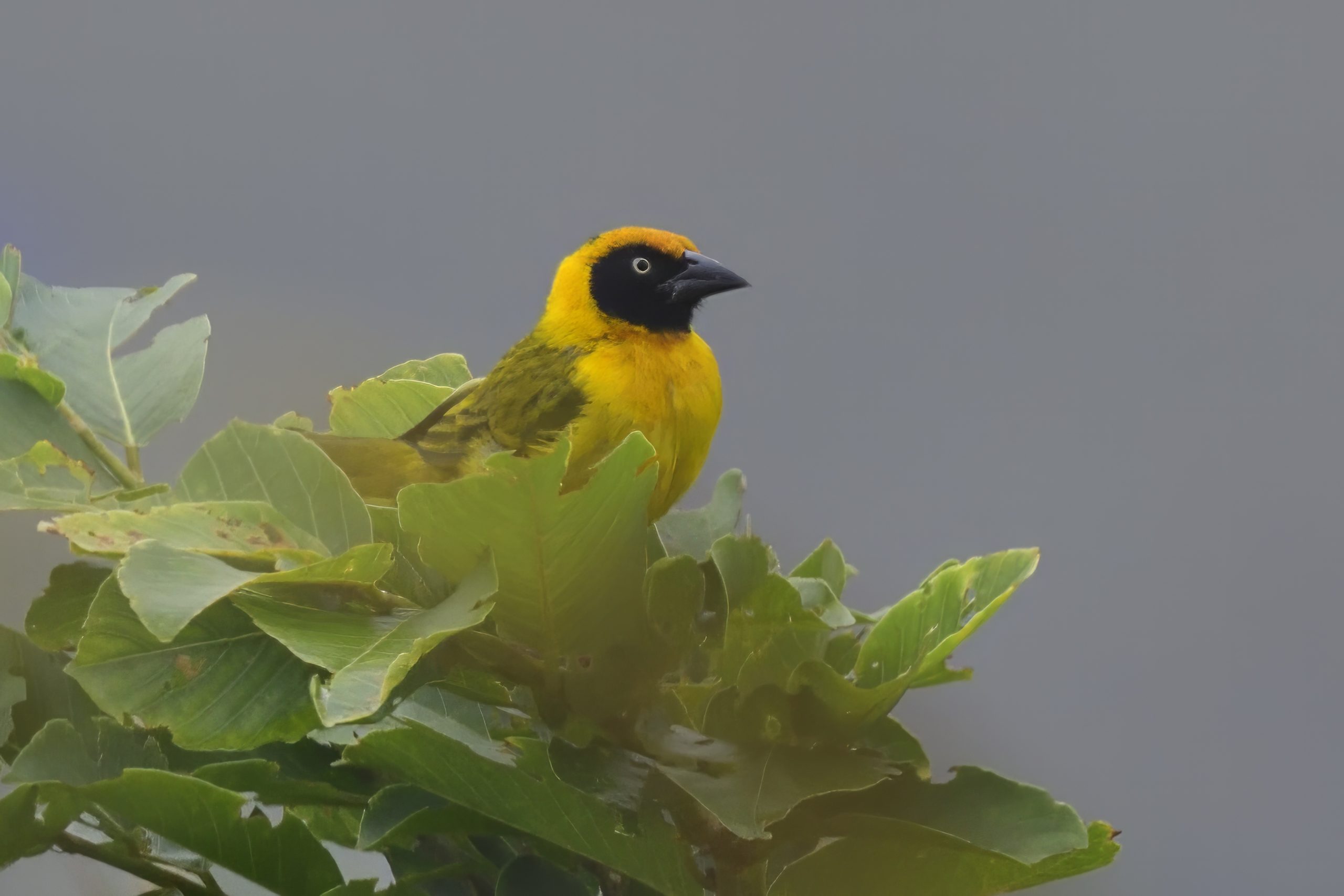
Bertram´s Weaver, Ploceus bertrandi – Endemic to highlands of SE Africa
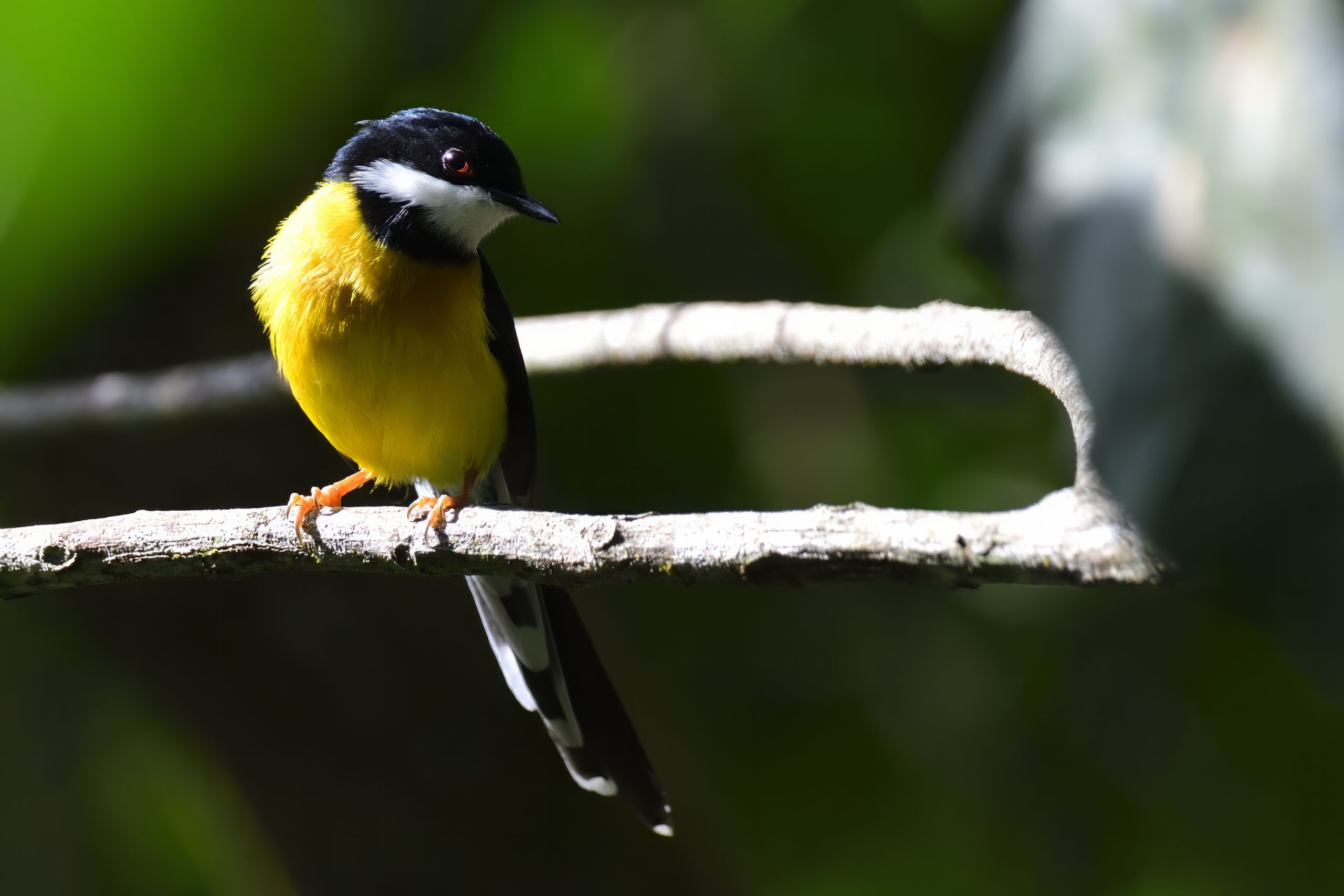
White-winged Apalis, Apalis chariessa – Endemic to SE Africa
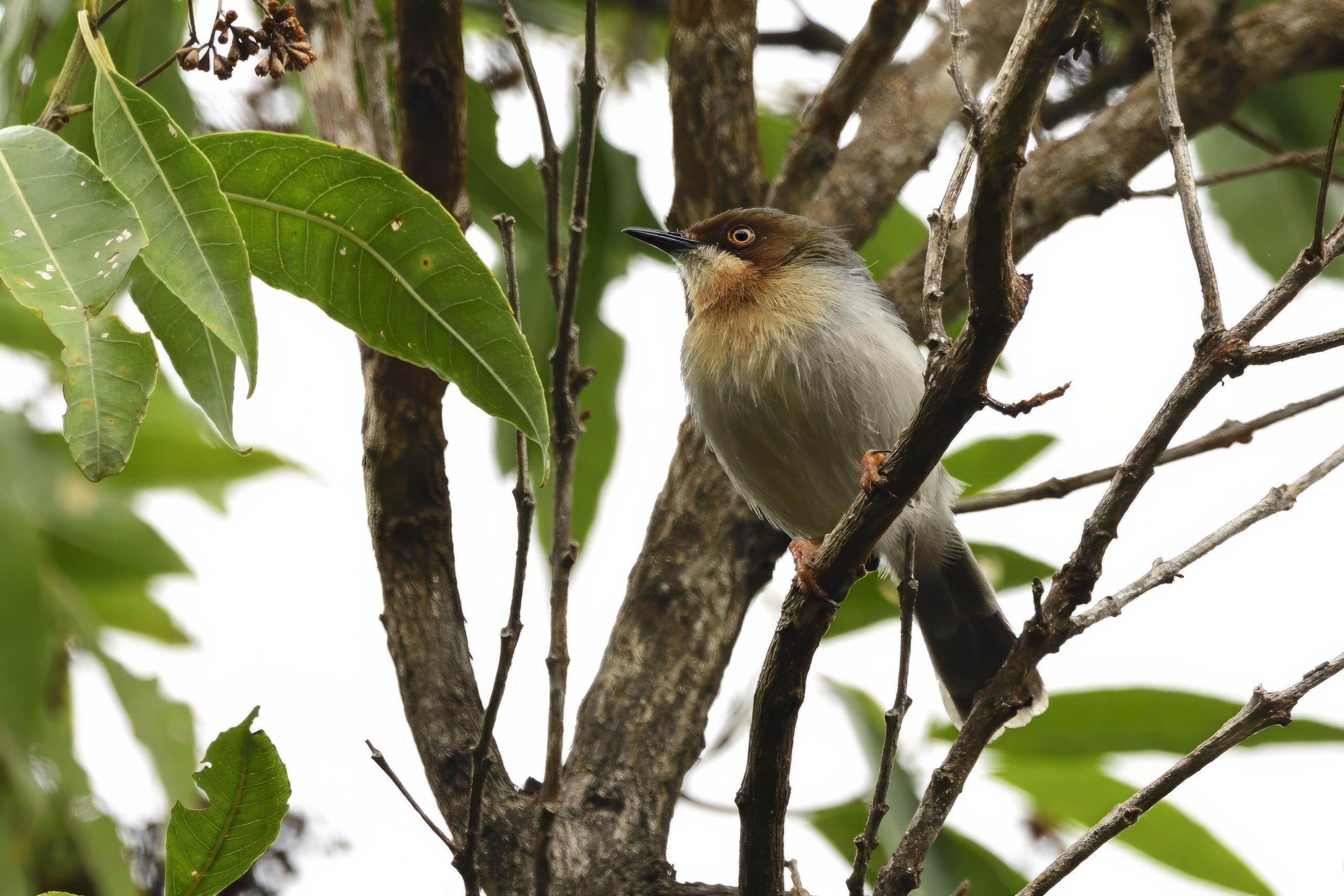
Chapin´s Apalis, Apalis chapini – Endemic to Montane Forests of S Tanzania, Malawi and E Zambia
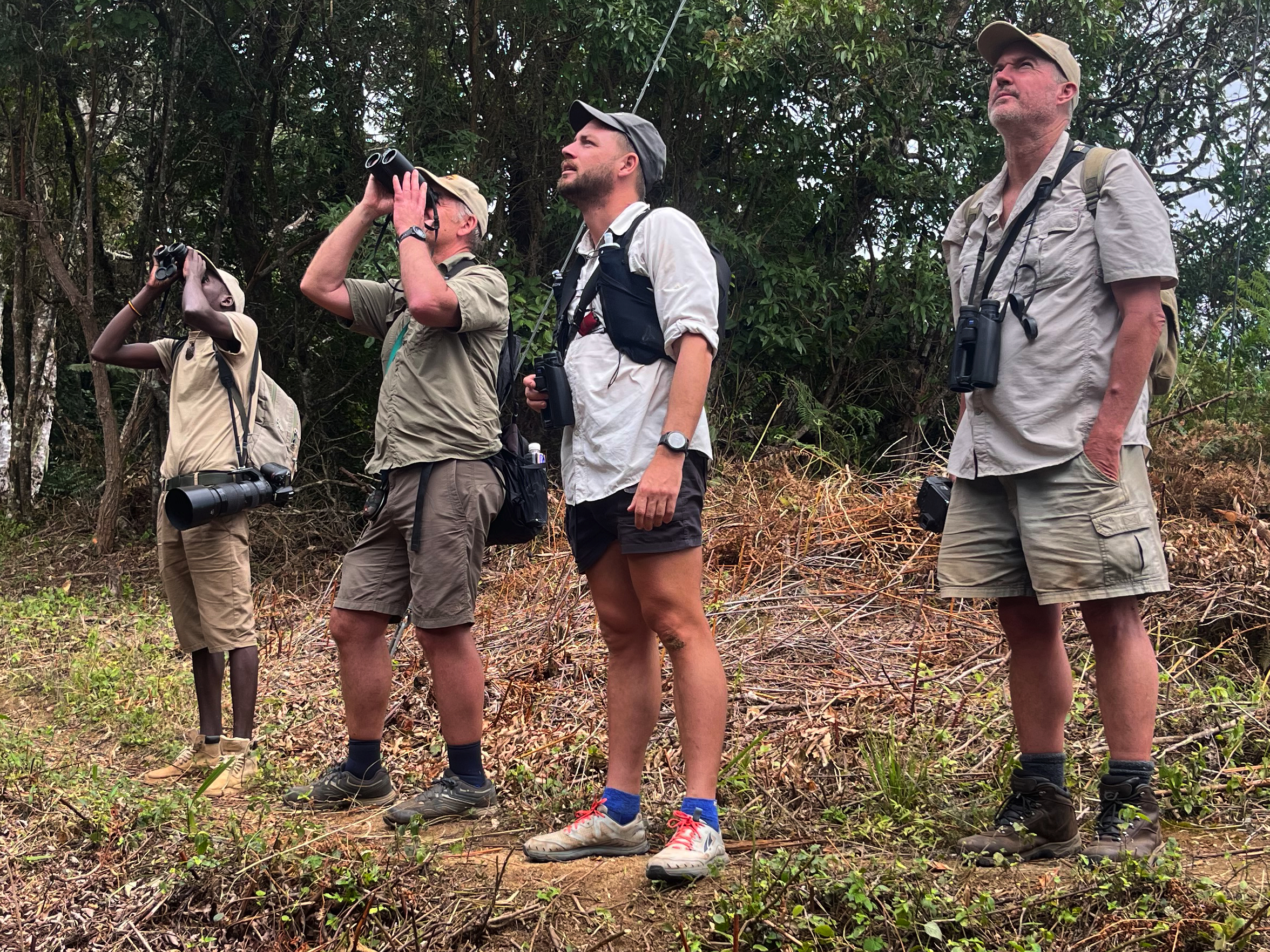
The boys on the hunt for their next Lifer
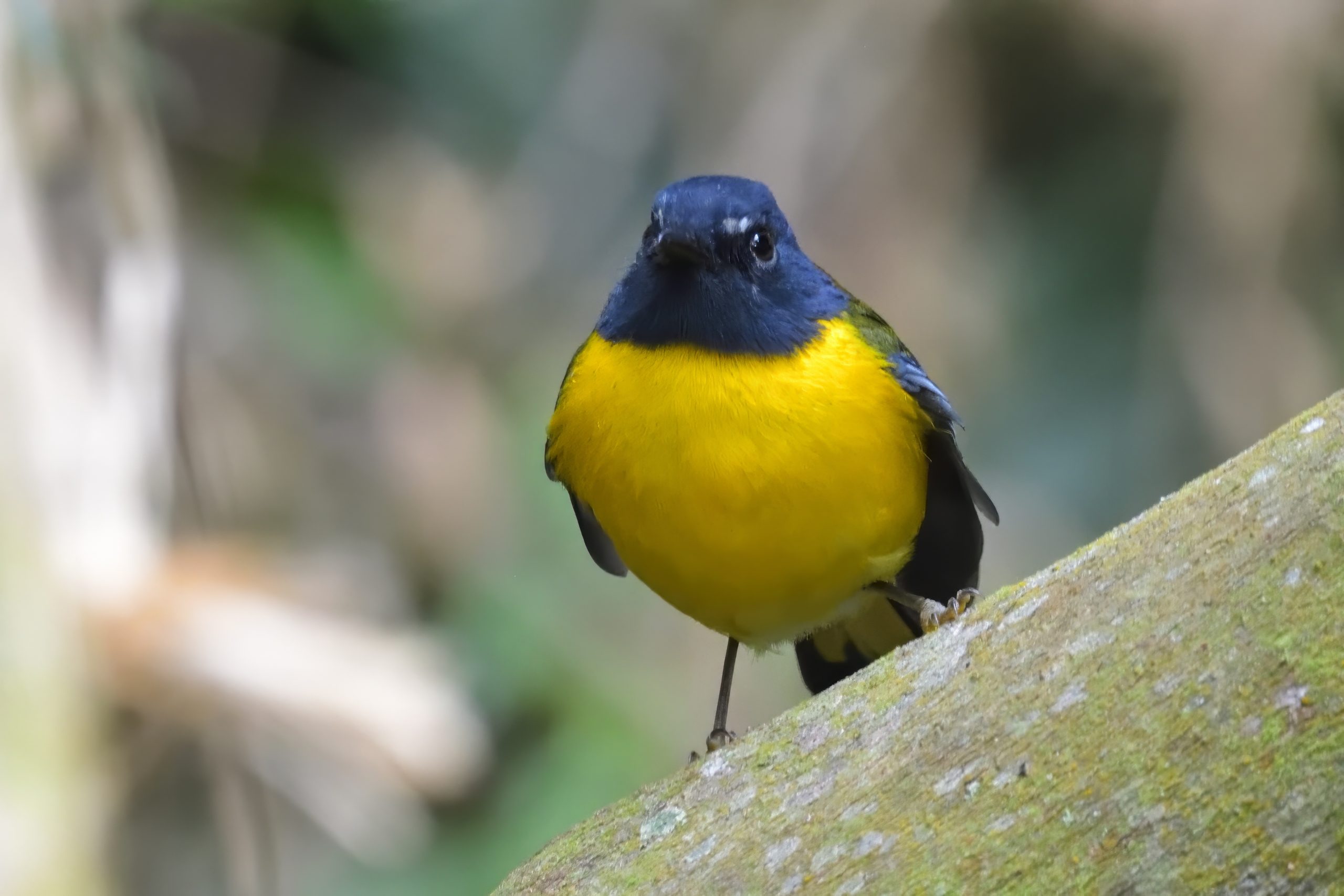
White-starred Robin, Pogonocichla stellata
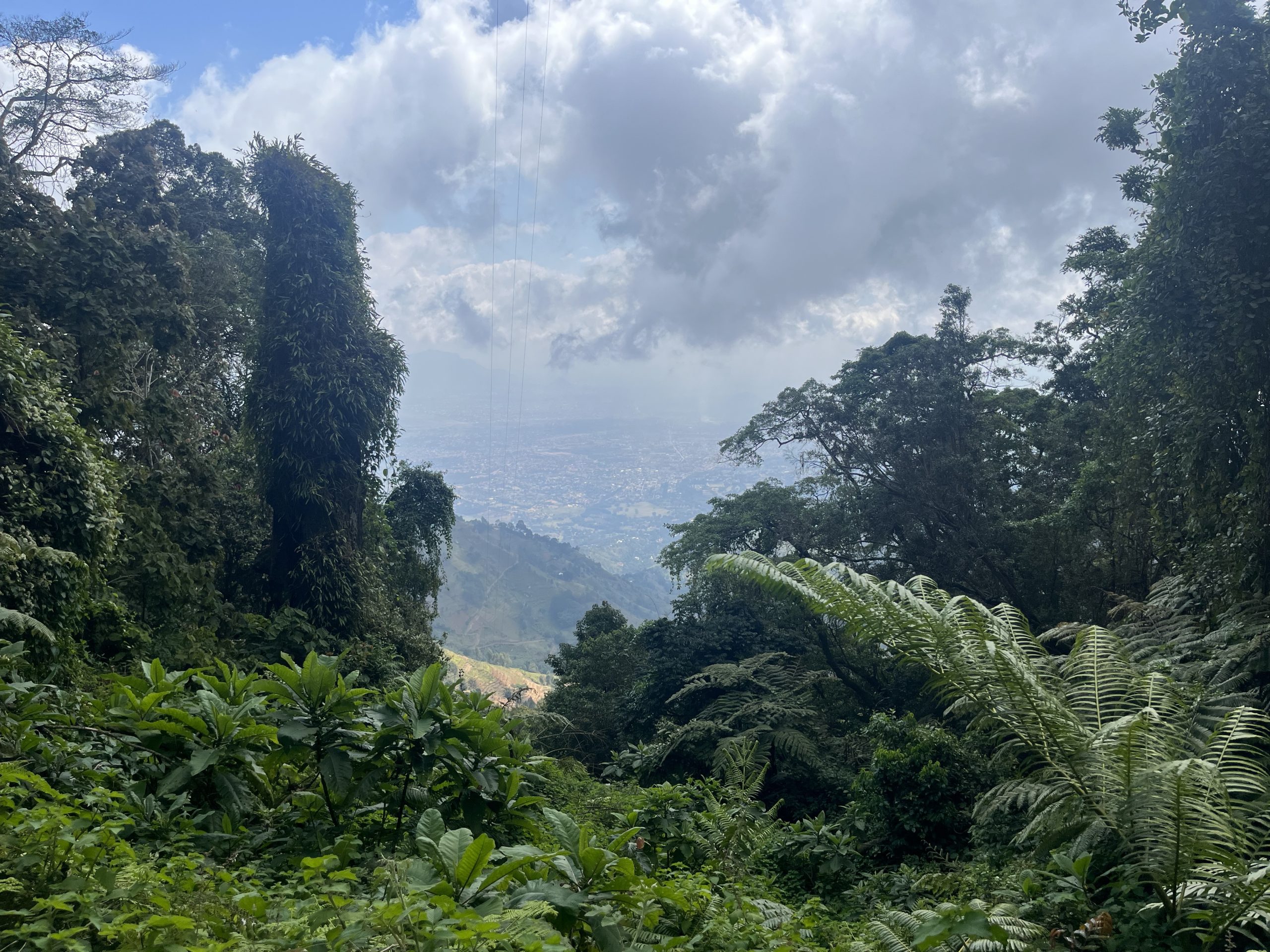
Fantastic views from the path
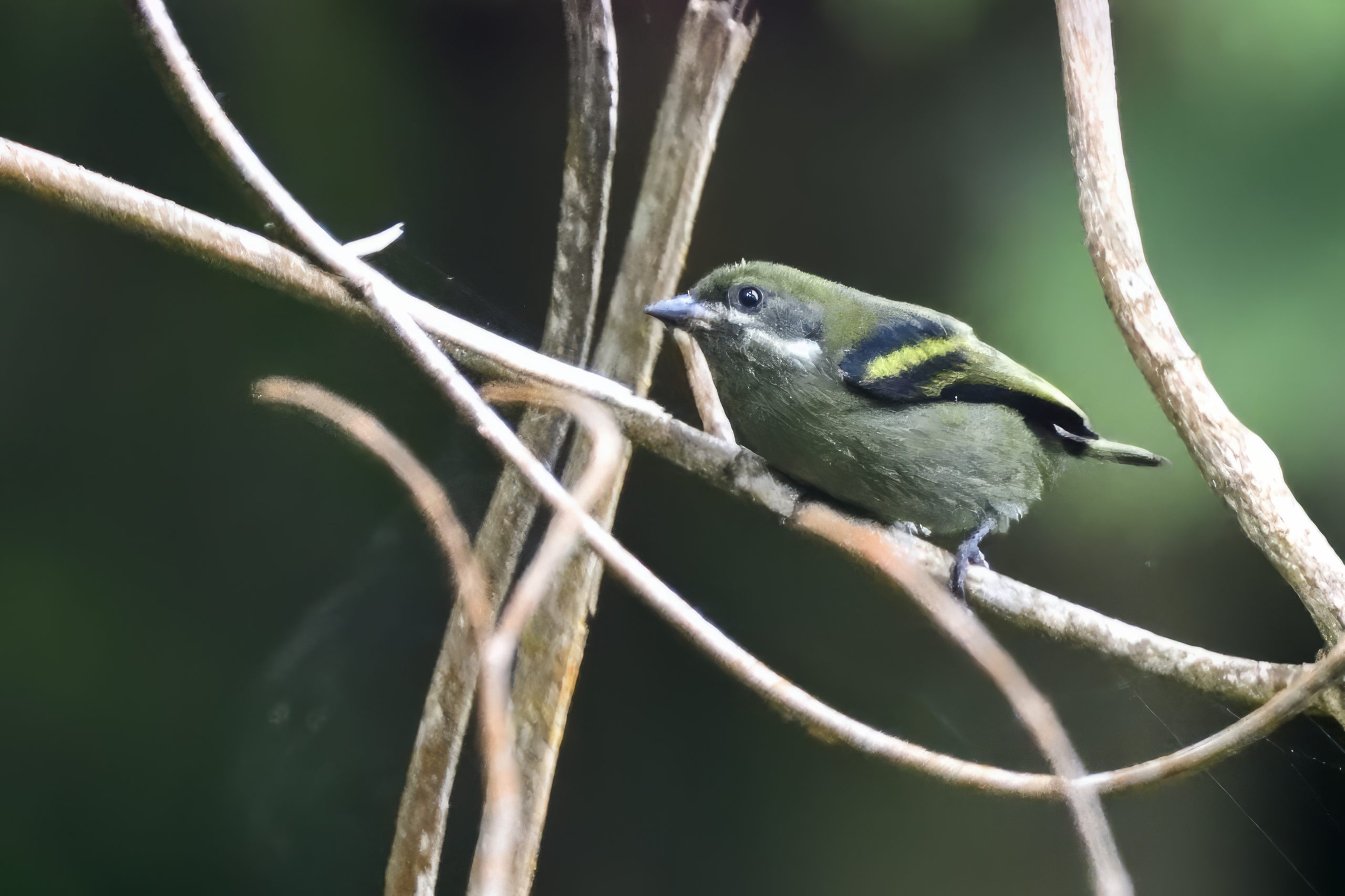
Moustached Tinkerbird, Pogoniulus leucomystax
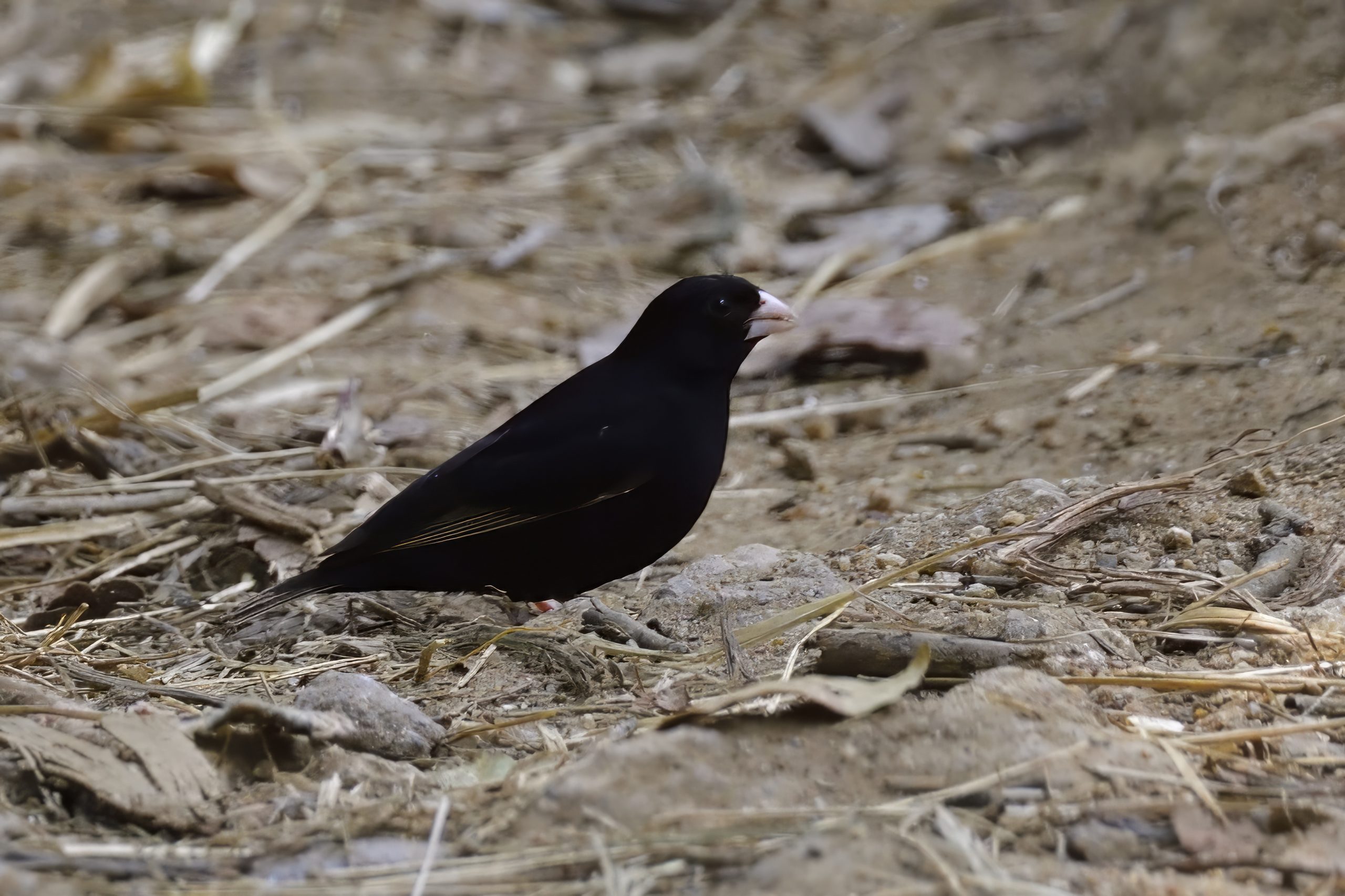
Dusky Indigobird, Vidua codringtoni
Day 11, Wednesday, July 26, Gairo to Ukaguru Mountains to Babati.
A ranger came to our hotel in the morning to follow us up the mountain. We stopped and bought some Chapatis on the way. We arrived at our birding spot a little after 08:00. To my chock I found out that the Autofocus on my Nikon 500mm F5.6 PF were no longer working. I thought it strange since it worked after I fell a few times the day before. At any rate, we started ticking birds: Moreau´s Sunbird, Evergreen Forest Warbler, Chapin´s Apalis, Moustached Tinkerbird, Livingstone´s Turaco, White-tailed Crested Flycatcher, Dark Batis, Rubeho Akalat, Olive-flanked Ground Robin and Yellow-throated Greenbul. I had told the boys we needed to get moving at 12:00 and we were all ready to go. On the way down the mountain we stopped for Black-lored Cisticola, then I asked them to look for a Fiscal. I had not finished my sentence before one of the boys shouted Fiscal. This is Uhehe Fiscal a sub species of Southern Fiscal. We drove down the mountain and dropped our ranger in Gairo. We had a long drive ahead of us to Babati. We stopped in Dodoma for a top up off refreshments and Diesel and arrived at our Guest house in Babati just as it was getting Dark. I had done a little scouting in the area a few weeks before the boys arrived so it were easy to find the guest house. We freshened up and went to a restaurant that I had also scouted out. The meal were nice and we ordered quite a few Chapatis for the day after. We returned to the Guesthouse and retired early for the night. I were fiddling with my camera and my lens, but whatever I did, I could not get it to autofocus. I always brought my 200-500mm as a back up lens, but I had stupidly sold that lens a few months before.
Day 12, Thursday, July 27, Babati to Mbulu Mountains, and home to Kiligolf via the entrance to Tarangire NP
Since I had scouted out the area a couple of weeks before, we drove straight to our spot. When I parked the car I was shocked to see that my lens had now broken into 2 pieces. At any rate we started birding. Here are some of the birds recorded: Eastern Double-collared Sunbird, Evergreen Forest Warbler, The Mbulensis race of Olive-flanked Ground Robin, Mountain Yellow Warbler, Mbulu White-eye, Brown Woodland Warbler, Schalow´s Turaco, Thick-billed Seed-eater, Abyssinian Thrush, African Goshawk, Tropical Boubou, Brown-headed Apalis, Bronzy Sunbird, Purple Grenadier, Baglafecht Weaver, Yellow-crowned Canary and African Hawk-Eagle. We had now reached the house of the ranger that overlooks the forest and I paid the fees and we all signed the book. Then we started the long drive down the mountain, through Babati and toward the turn off to Tarangire National Park. We reached the turn off at around 14:00 and I estimated we had about an hour to be back on the main road. At my first stop we registered Silverbird, Rufous-tailed Weaver, Brubru, White-bellied Go-away-bird, White-headed Buffalo Weaver, Yellow-collared Lovebird, Mourning Collared Dove, and Beautiful Sunbird. We loaded up and drove to the gate of Tarangire NP: I had full confidence in the boys because all three of them were better birders than me. I just told them what to look for and to find the bird bath around the gate and to be back at the car around 15:00. Here are some of the birds they found: Ashy Starling, Northern Pied Babbler, Swahili Sparrow, Slate-colored Bobou and Buff-bellied Warbler. I were very happy that they found the Babbler because that meant I did not have to stop at Nanja on the way home. On the way towards the main road, we stopped for a pair of Magpie Shrikes. We were soon on the main road. We stopped briefly in Makuyuni for a top up off refreshments and Diesel before we headed home. We arrived home at around 18:00 after a loop of more than 3.000 km. The ladies had made a nice dinner. Justin went out to the Golf course to get the very common Slender-tailed Nightjar. I were already in bed by then.
One sad picture from Day 12:
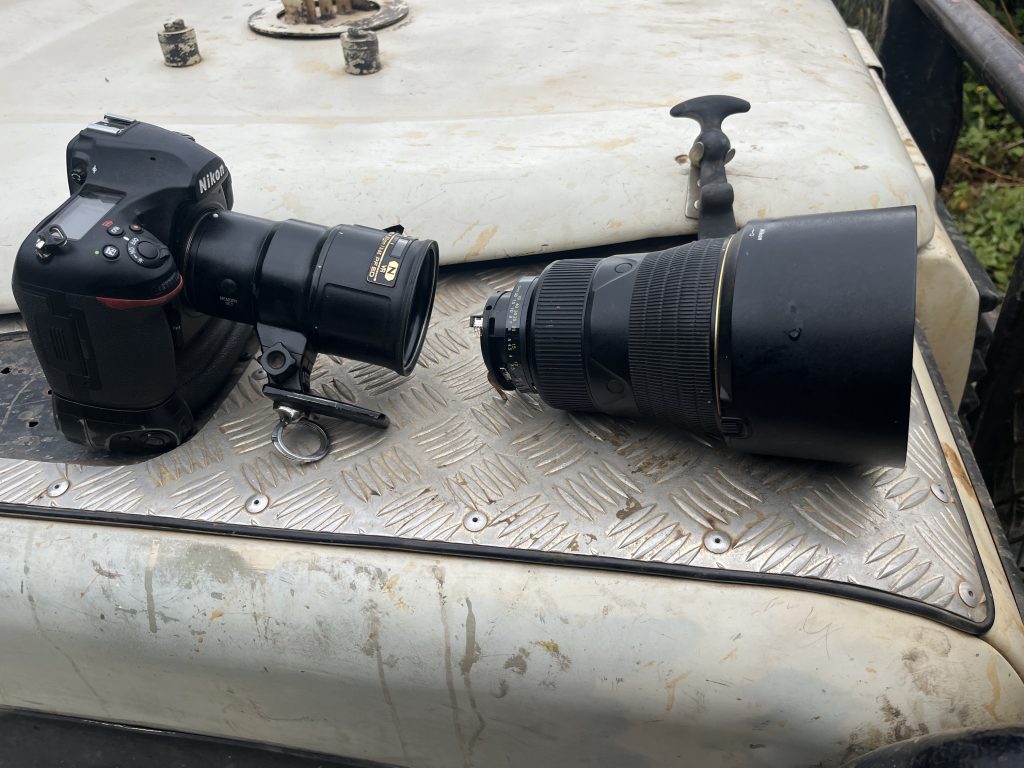
My broken lens. Niall brought it with him to SA, but the conclusion were that it is not fixable 🙁 $3.300 down the drain.
Day 13, Friday, July 28, Kiligolf – Lark Plains – Oldonyo Sambu – Monduli Mountains – Kiligolf.
We had quite a busy program that day. The boys from SA offered to drive, which were very ok with me. We decided that Niall should drive to our destination and Justin home. Our first stop were the Lark Plains at Engikaret. On the way to where we normally stop we registered amongst others these species: Northern Fiscal, Augur Buzzard, White-bellied Go-away-bird, Speckle-fronted Weaver, Foxy Lark, Capped Wheatear and Chestnut-bellied Sandgrouse. We parked the car, spotted my Masai friends in the distance and started to walk towards them. We found in the span of less than 10 minutes Beesley´s, Short-tailed and Athi Short-toed Lark. This must have been a new record for me. We met up with the Masais and told them we already had the Beesley´s. We walked towards the car and picked up Red-capped Lark, Tawny Eagle Red-and-yellow Barbet and Taita Fiscal. We started driving towards the Acacia forest near the Masai boomas. On the way we added amongst others: Yellow-bellied Eremomela, Southern Grosbeak Canary and African Grey Flycatcher. I parked at my normal breakfast spot and from where we parked we got quite a few birds: Bare-eyed Thrush, Grey-capped Social Weaver, Rock Martin, Brubru, Banded Parisoma and Kenya Sparrow. After breakfast, we took a short walk in the forest. Here are some of the new birds we added from the area. Lappet-faced Vulture, Red-throated Tit, Red-fronted Prinia, Buff-bellied Warbler, Cardinal Woodpecker, Pygmy Batis, Slate-colored Boubou, Red-fronted Barbet and Chestnut Sparrow. The last one we sawback at the car. We were still missing Ashy Cisticola, Rosy-patched Bushshrike and Scaly Chatterer. We tried for all those three, but no response. I showed the boys a path and I met them with the car at the end of the path. I never think I have dipped on the Bushshrike. We drove towards the main road and followed the feeder road as far as we could. Here are some of the birds we picked up: Wattled Starling, Fischer´s Sparrow-Lark, White-bellied Canary, White-headed Buffalo Weaver, Greater Kestrel, Levaillant´s Cuckoo, Tiny Cisticola, Black-throated Barbet, Northern Crombec and Eastern Violet-backed Sunbird. We drove slowly on the main road and came to a place Niall recognised from 2010! We stoped, I stayed by the car and the boys went hunting and came back with a big smile on their face because they had found the Scaly Chatterer. We continued to drive slowly towards Oldonyo Sambu and found Hildebrandt´s Starling. The others had seen this on Kiligolf, but Richard finally got that bird under his belt. We arrived at Oldonyo Sambu and really had only one bird to look for, the Little Rock Thrush. We tried for a while at the normal spot, but eventually gave up. I joked with Justin when he reported a Schalow´s (Abyssinian) Wheatear. I rold him that he would see plenty of them at the next spot. However; a bird in hand is better than 10 on the roof? Other birds recorded at Oldonyo Sambu included: White-fronted Bee-eater, Red-winged Starling, Streaky Seed-eater, Red-rumped Swallow, White-necked Raven and Lanner Falcon. On the drive toward our next destination I asked the boys to look at all electrical poles for a Common Kestrel that Justin needed. Sure enough we found one. We took off from the main road and drove up towards my Lyne´s Cisticola spot. On the way as promised we had plenty of Schalow´s Wheaters. We parked at my lunch spot and started searching for the Lyne´s Cisticola. It were elusive, but we finally found one. At the same spot we also recorded: Arrow-marked Babbler, Cinnamon-breasted Bunting, Long-billed Pipit, Horus Swift and to my surprise Speke´s Weaver. Finding the last bird saved me from one stop. Now the options were to go closer to my house for Tacazzes Sunbird and Hunter´s Cisticola or go up Monduli Mountains for the odd chance of getting Golden-winged Sunbird and Abyssinian Crimsonwing. I told them the odds were very slim since I had seen those two birds up there only one time each. Hunter´s Cisticola were a guarantee though. The boys opted for Monduli Mountains. I warned them about the dust, but to my surprise the road were very good all the way up to were I normally parked. The birding up there were very slow as anticipated. Here are some of the birds we registered: Streaky Seed-eater, Cape Robin-Chat, White-eyed Slaty Flycatcher, Baglafecht Weaver, Hunter´s Cisticola, Hartlaub´s Turaco and Waller´s Starling. We left Monduli Mountains at exactly 17:00. I drove down to the main road and there Justin took over and drove us safely home. The ladies had prepared a nice meal for us and we retired early to bed.
Day 14, Saturday, July 29, Kiligolf – Airport.
On that day we were to do a catch up at Kiligolf before I would drive them to the airport for their departure via Nairobi back to South Africa. On the morning walk from the house we picked up amongst others the following species: Vitelline Masked Weaver, Orange-breasted Bushshrike, White-browed Coucal, Chestnut Weaver, Grey-headed Kingfisher, Grey-olive Greenbul, African Black Duck (my first sighting on Kiligolf), Lizard Buzzard, Southern Citril, Tambourine Dove, Black Cuckooshrike, Brown-breasted Barbet, Buff-bellied Warbler and Red-throated Twinspot. We dipped on Pale Honeyguide. We were back at the house exactly at 10:00 in time for breakfast. We relaxed a little after breakfast and did some lazy garden birding and added Sombre Greenbul, Crimson-rumped Waxbill and Yellow-bellied Greenbul to our list. We drove up to the clubhouse and birded the upper part of the golf course. Due to quite a few golfers, we decided to bird anti clockwise. We finally found one of our target birds a nice male Steel-blue Whydah in full breeding plumage. Other new birds for the day included Thick-billed Weaver, Red-backed Mannikin, Bare-eyed Thrush, Black Bishop, Magpie Shrike, Striated Heron, Red-throated Twinspot, African Yellow Warbler and Long-tailed Fiscal. We drove home for the boys to pack and freshen up. We had lunch at 14:00 and 14:30 the car were packed and we drove to the airport. We arrived safely at the airport and I said goodbye to my friends.
This were an extremely challenging trip customised for Niall to get as many lifers as possible in a limited time. We had very little time at each destination. I believe despite some mis happenings the trip went extremely well. Niall had been to Tanzania birding before. If I remember right, Niall managed to get 33 out of his 41 targets, Justin 117 out of 125 and Richard 91 out of 101, so we did pretty good. In total we managed to register 433 species. We could have gotten a lot more, but we were after quality and not quantity. My next trip is a standard Usambara trip starting on September 7. I am looking forward to a little less driving and a little less stress :-).